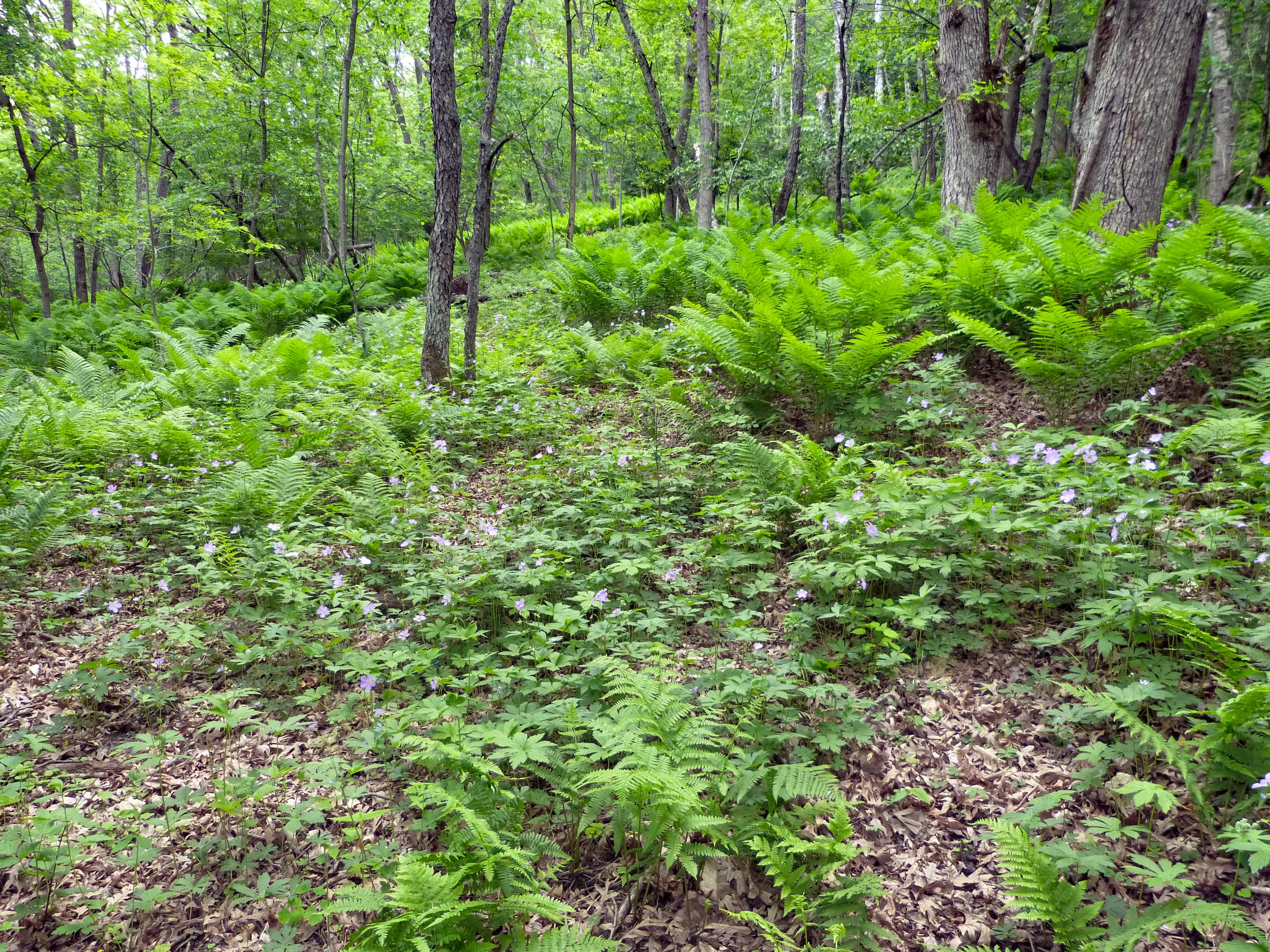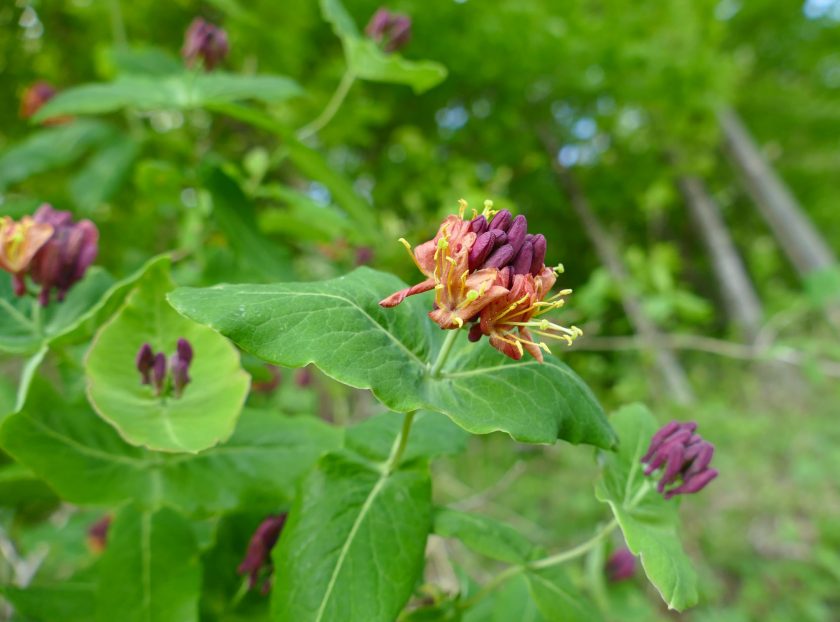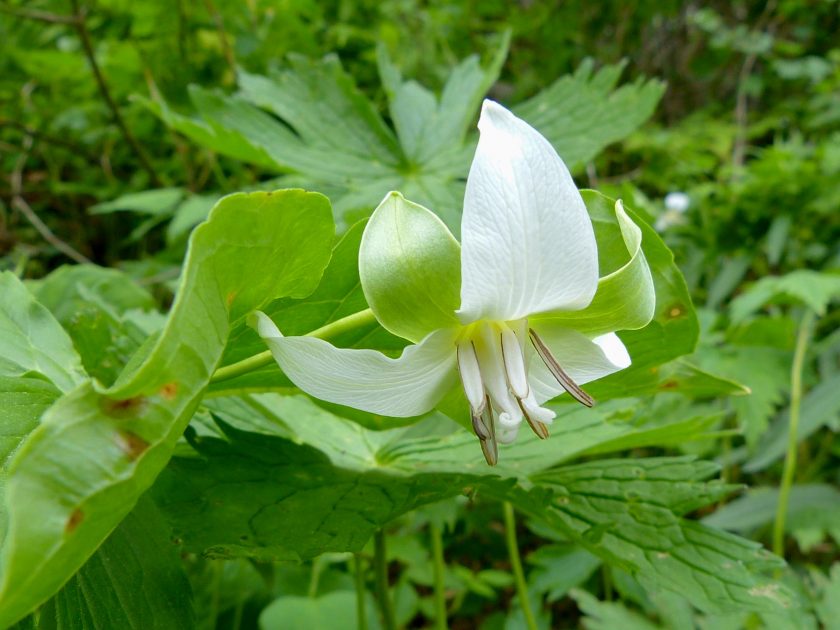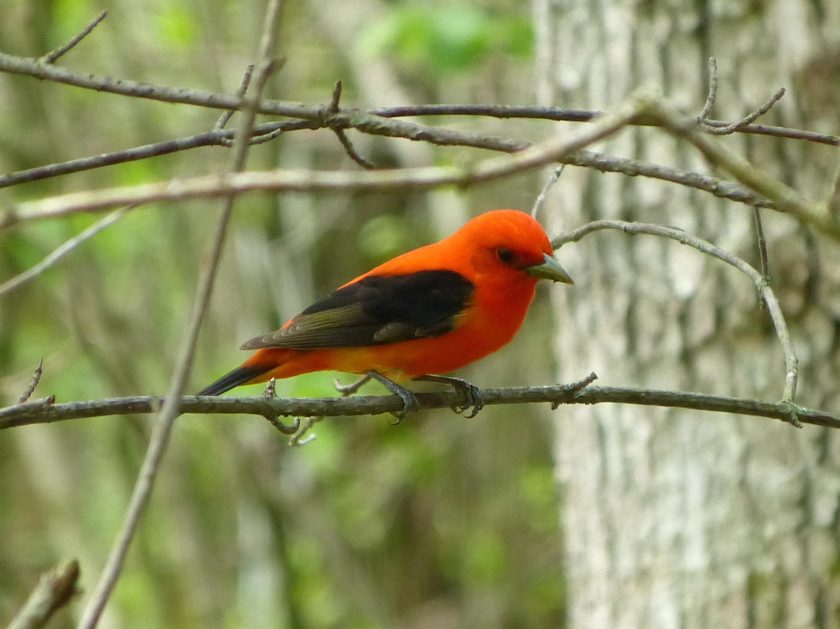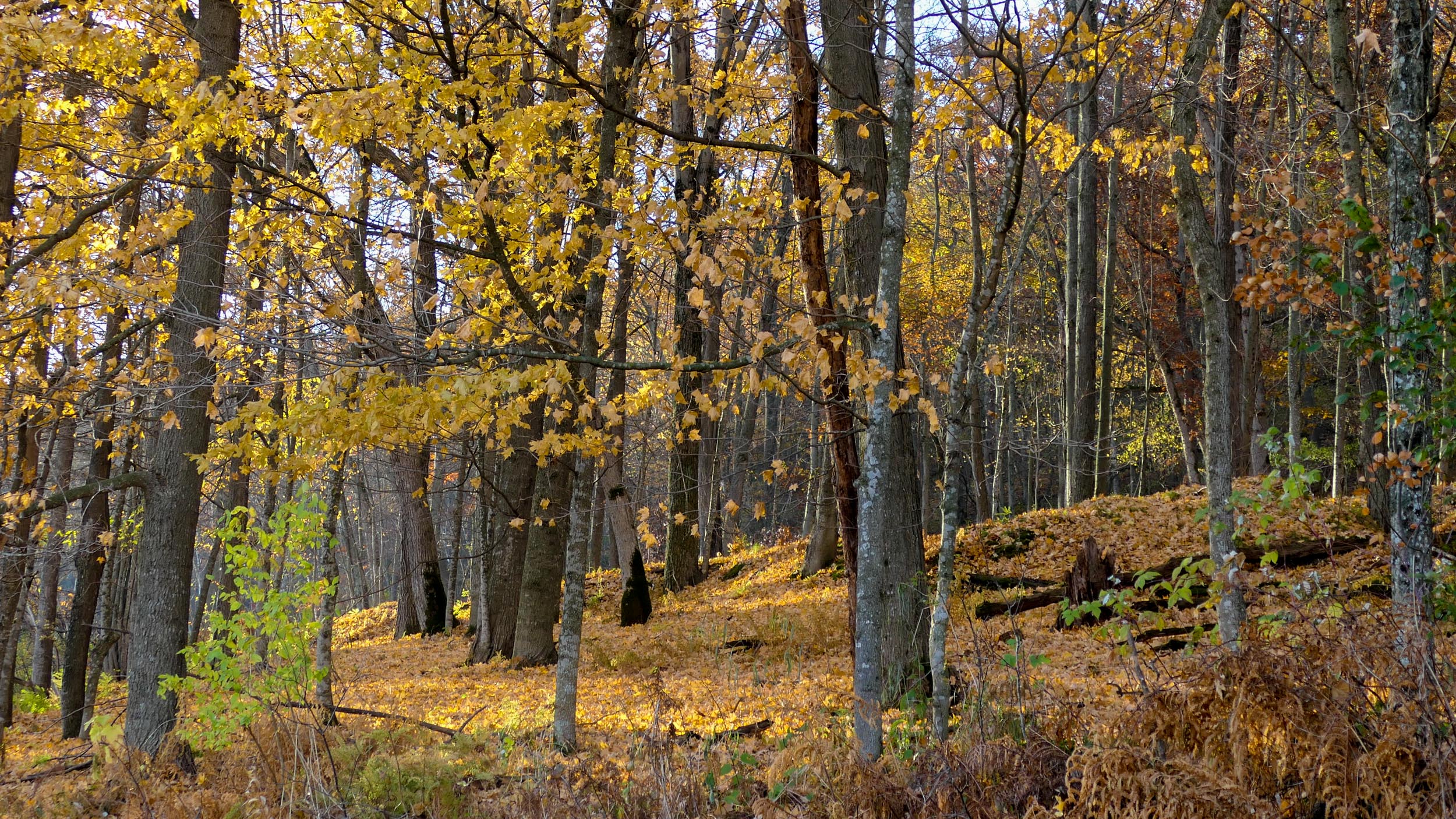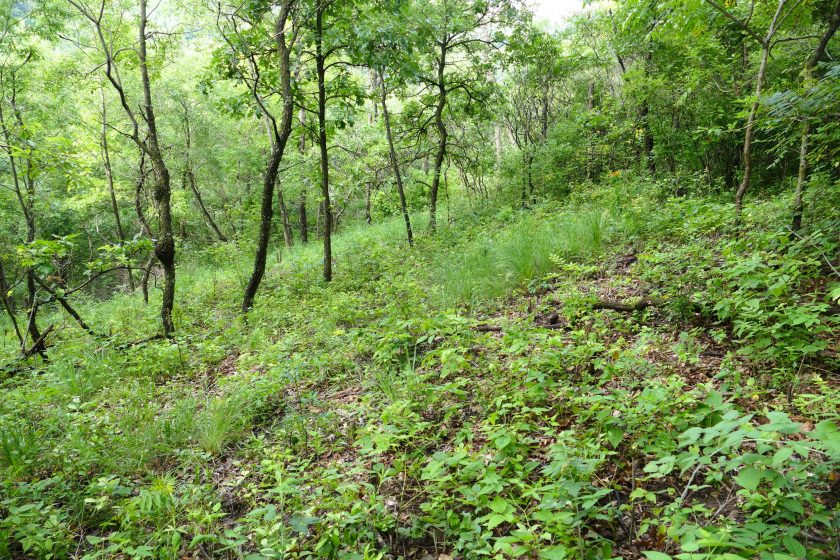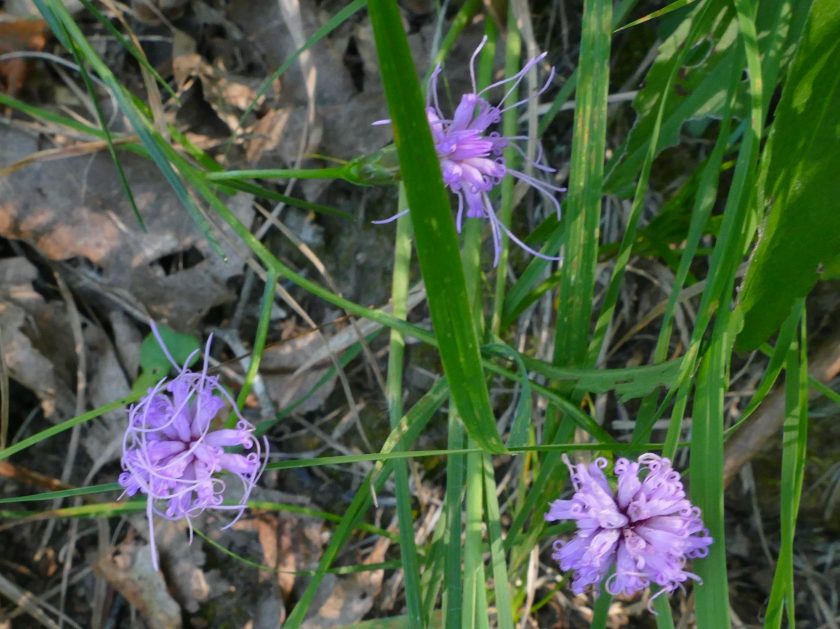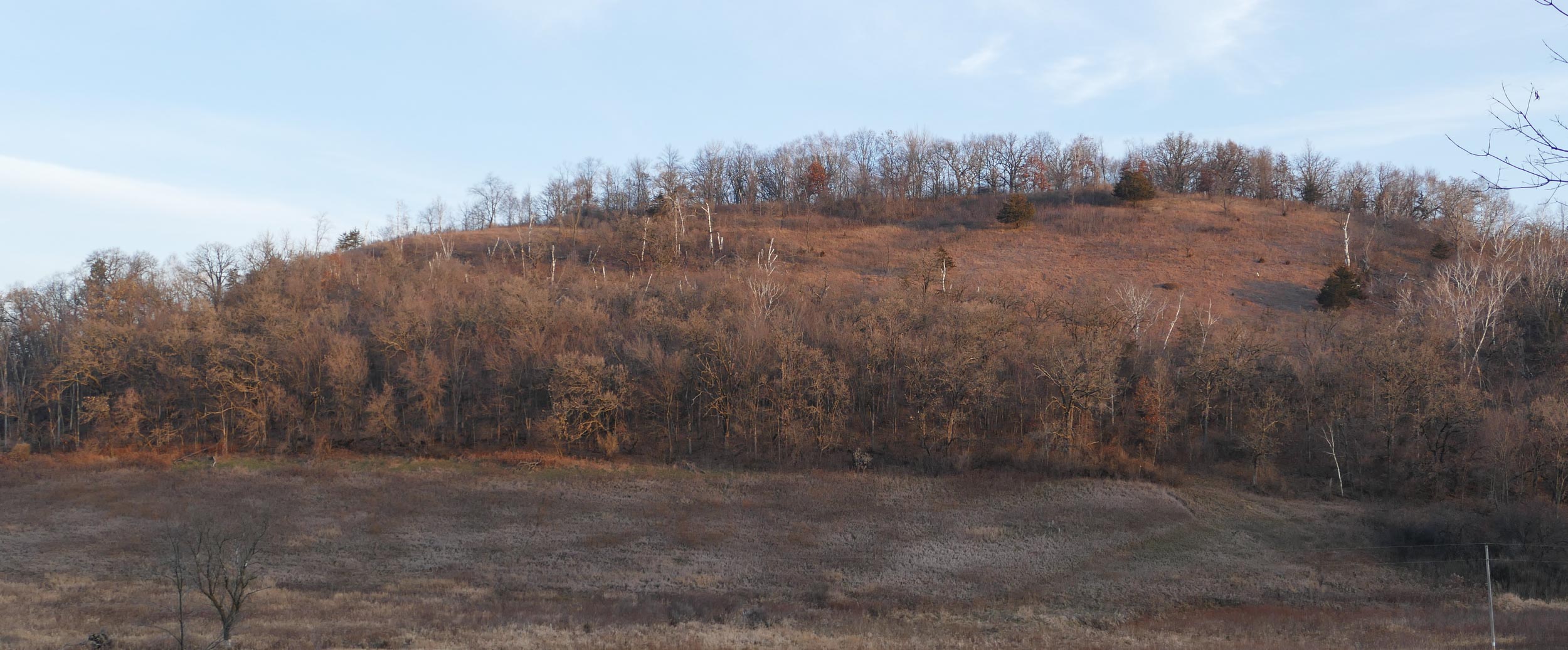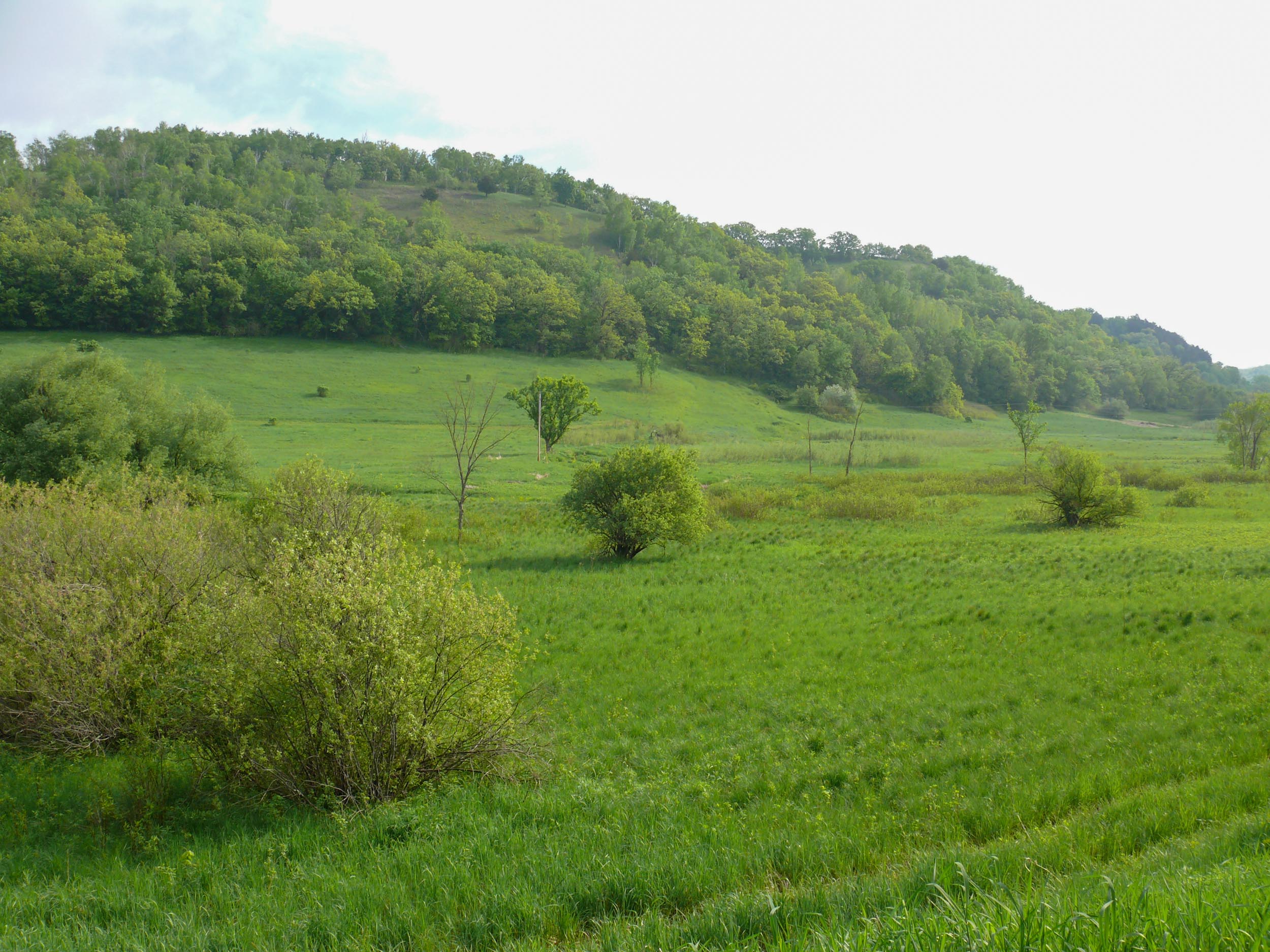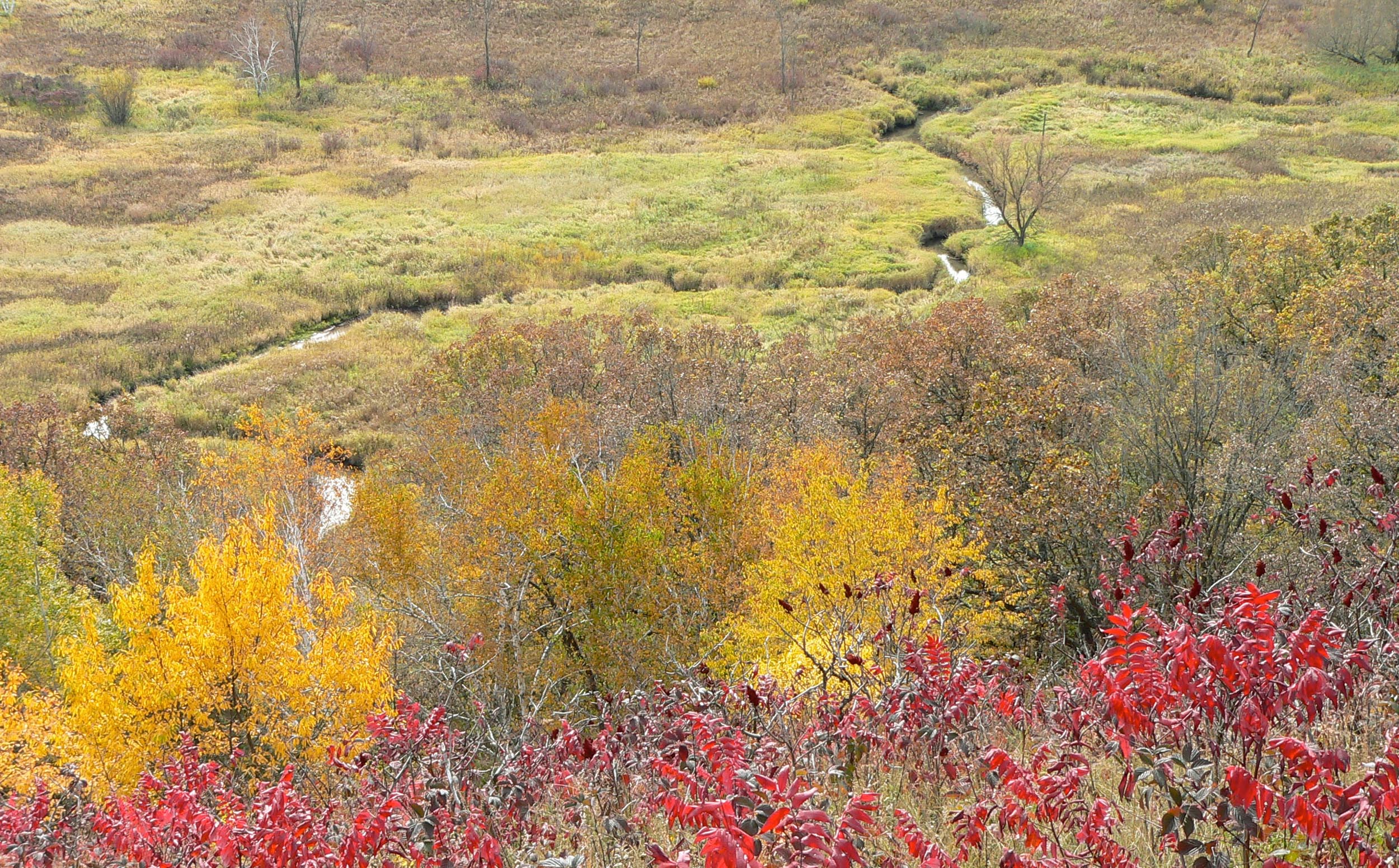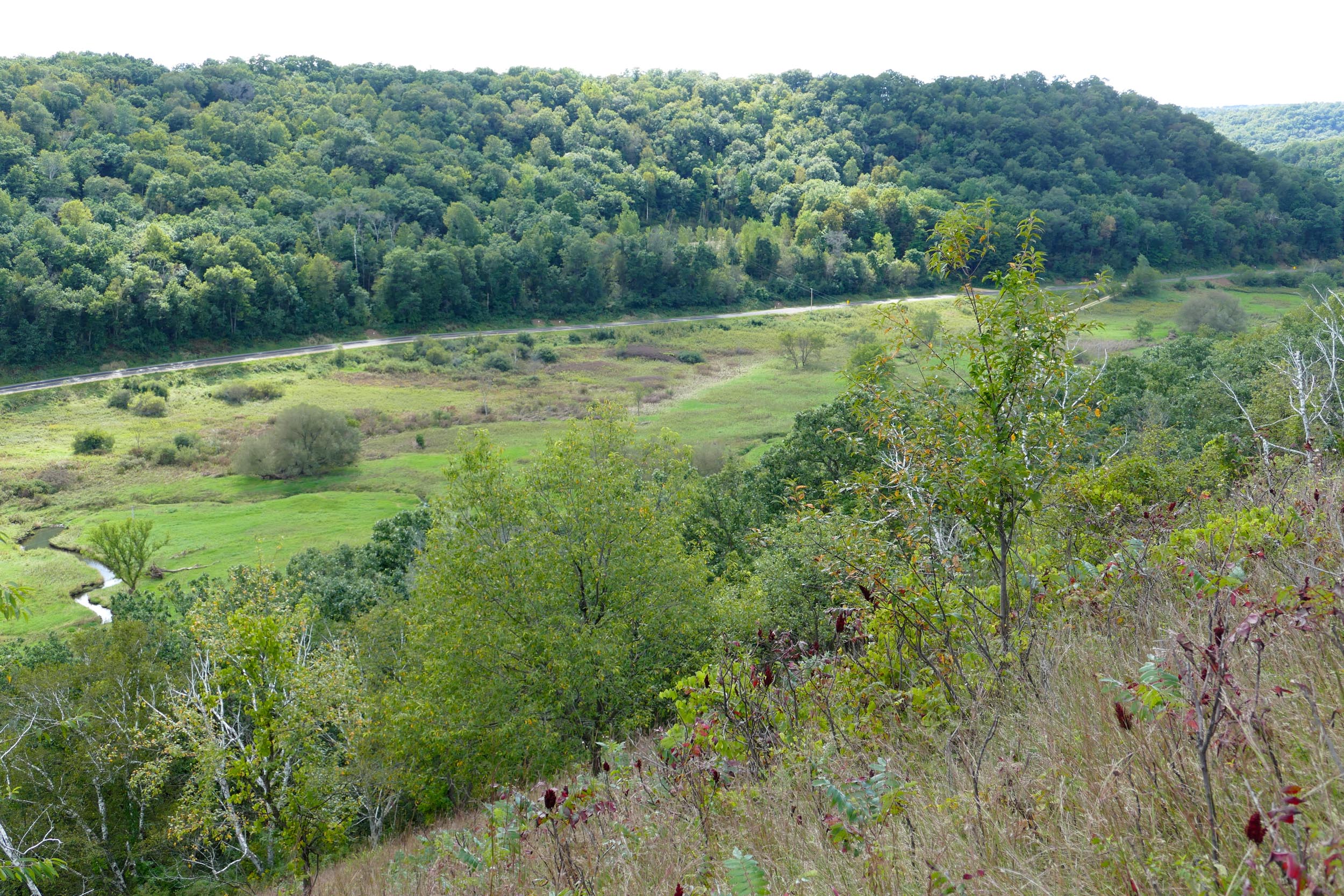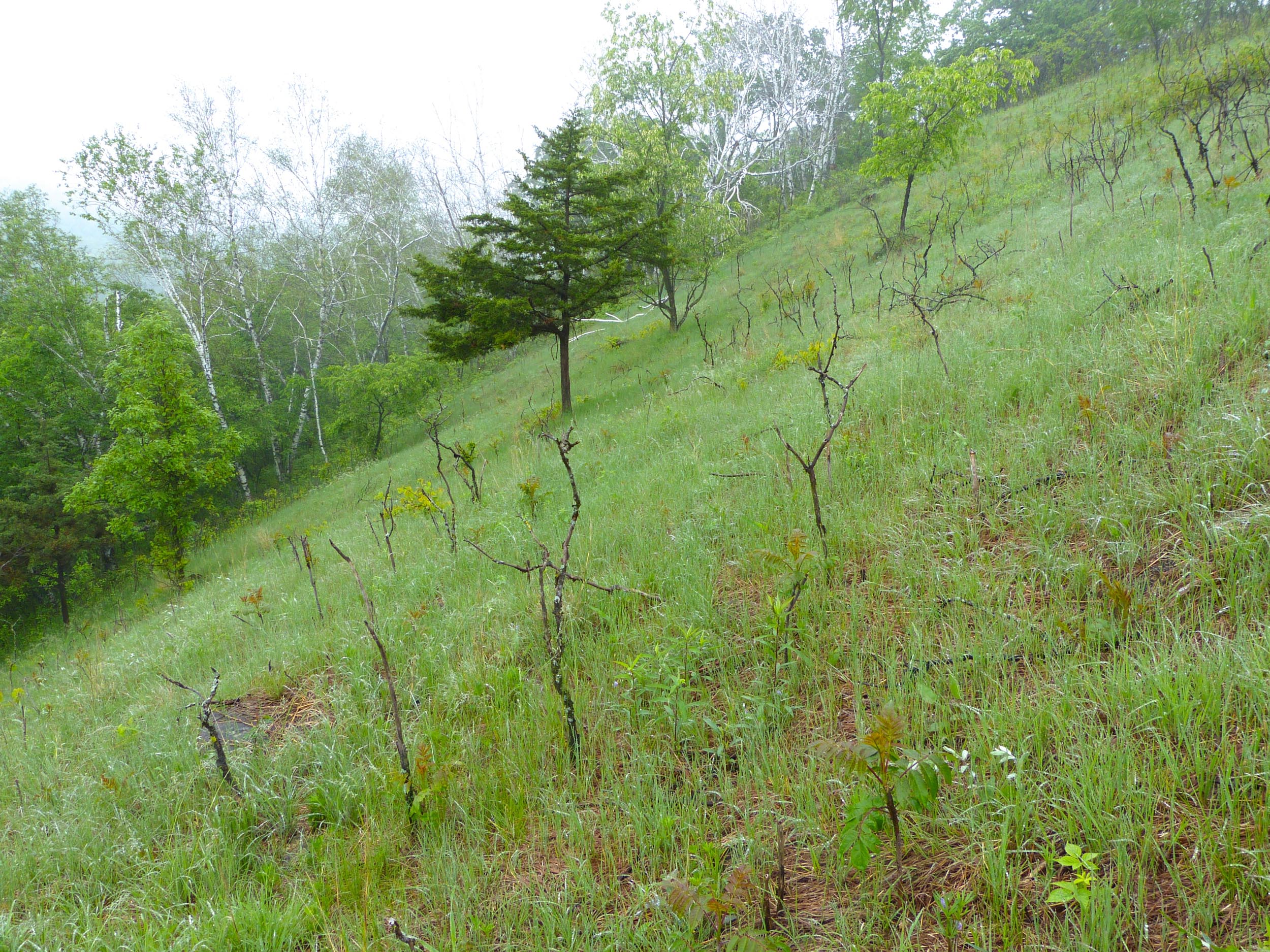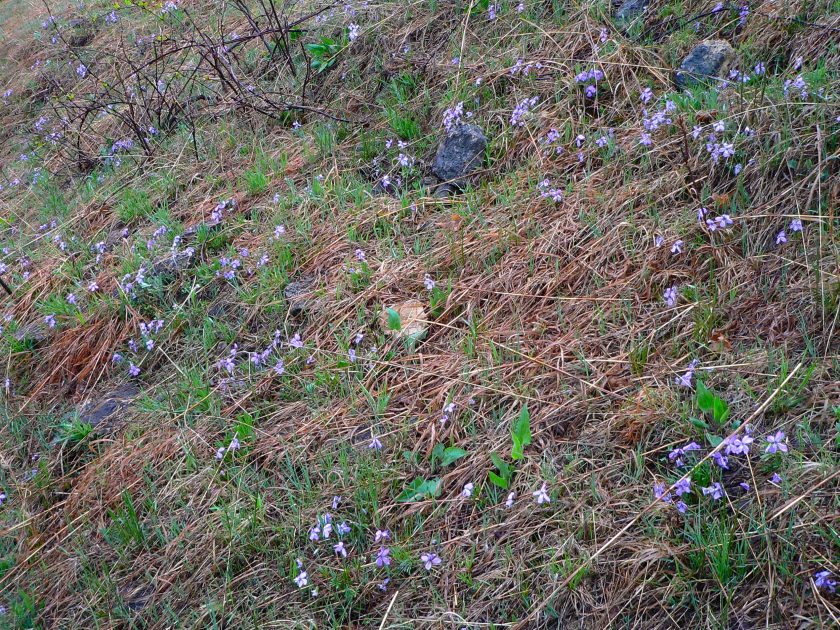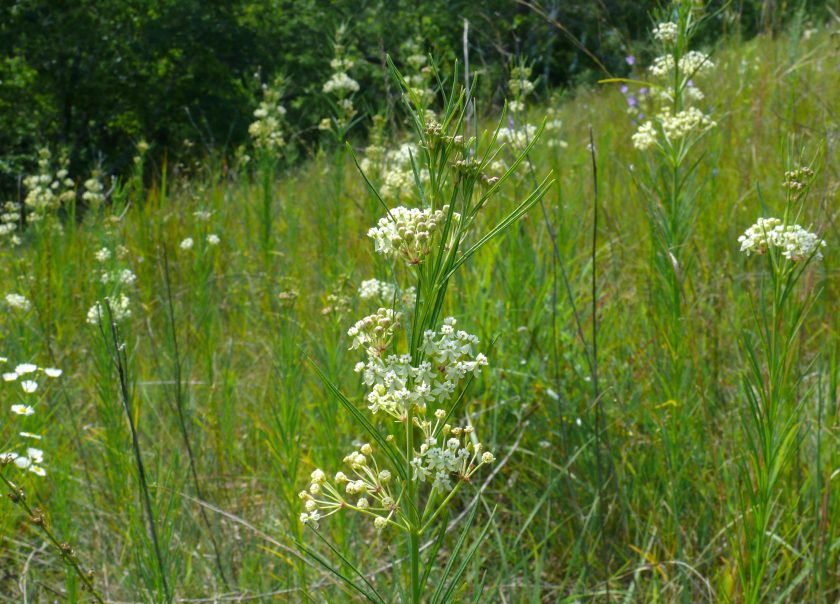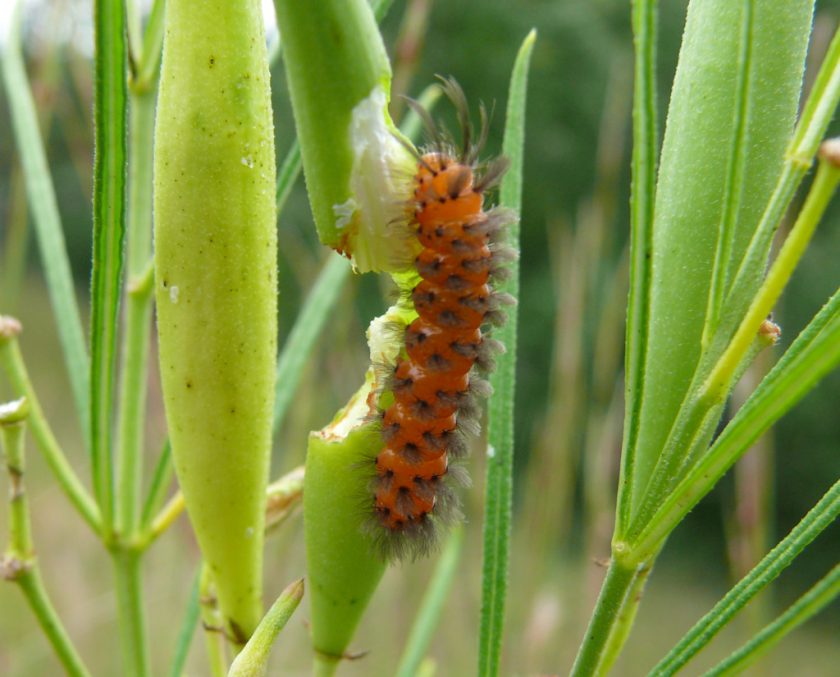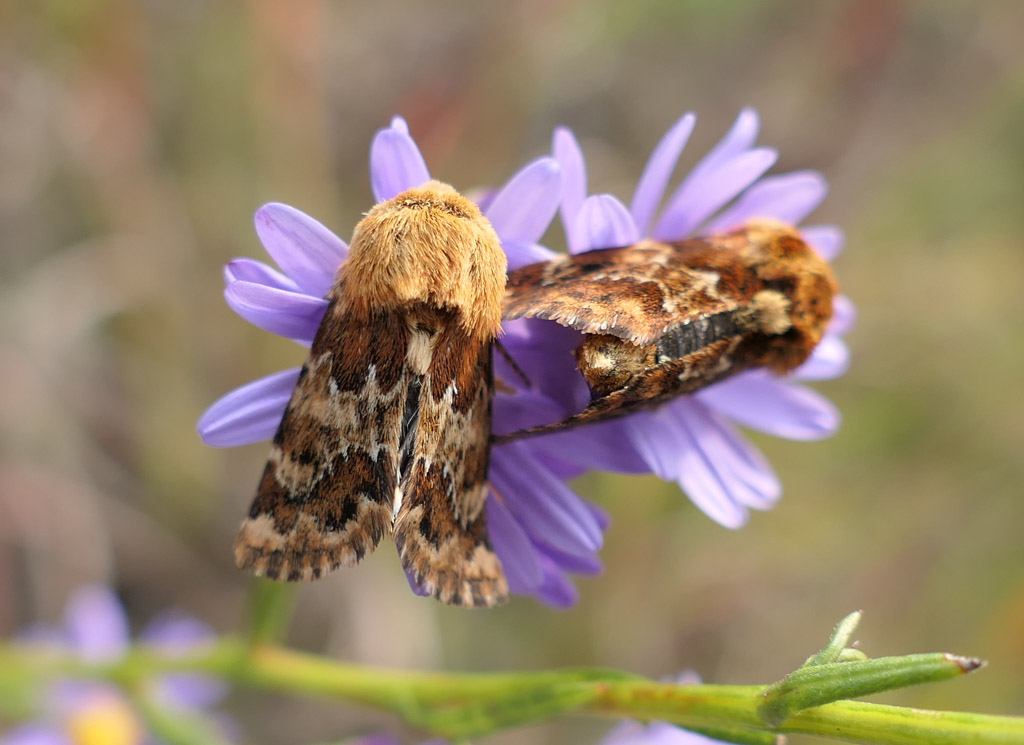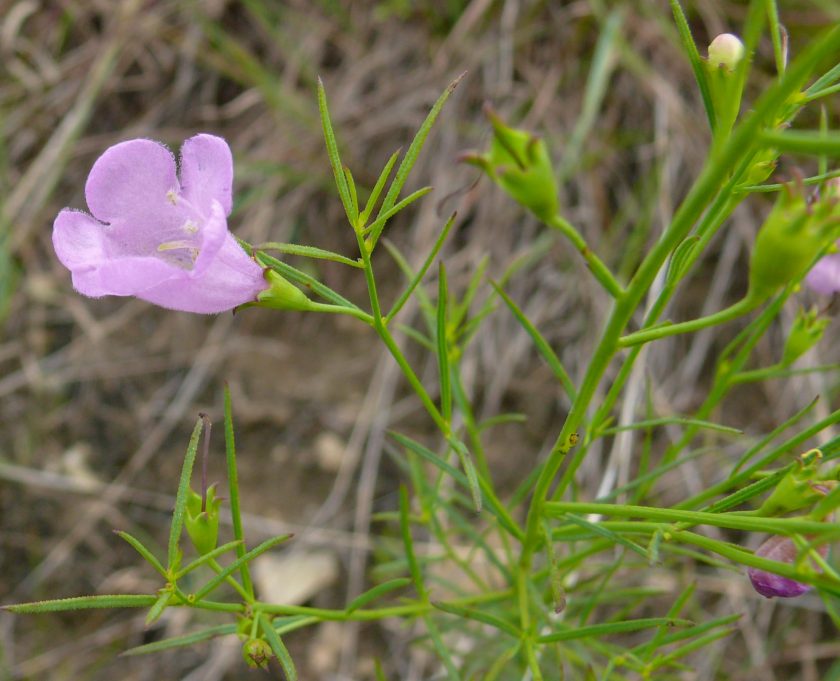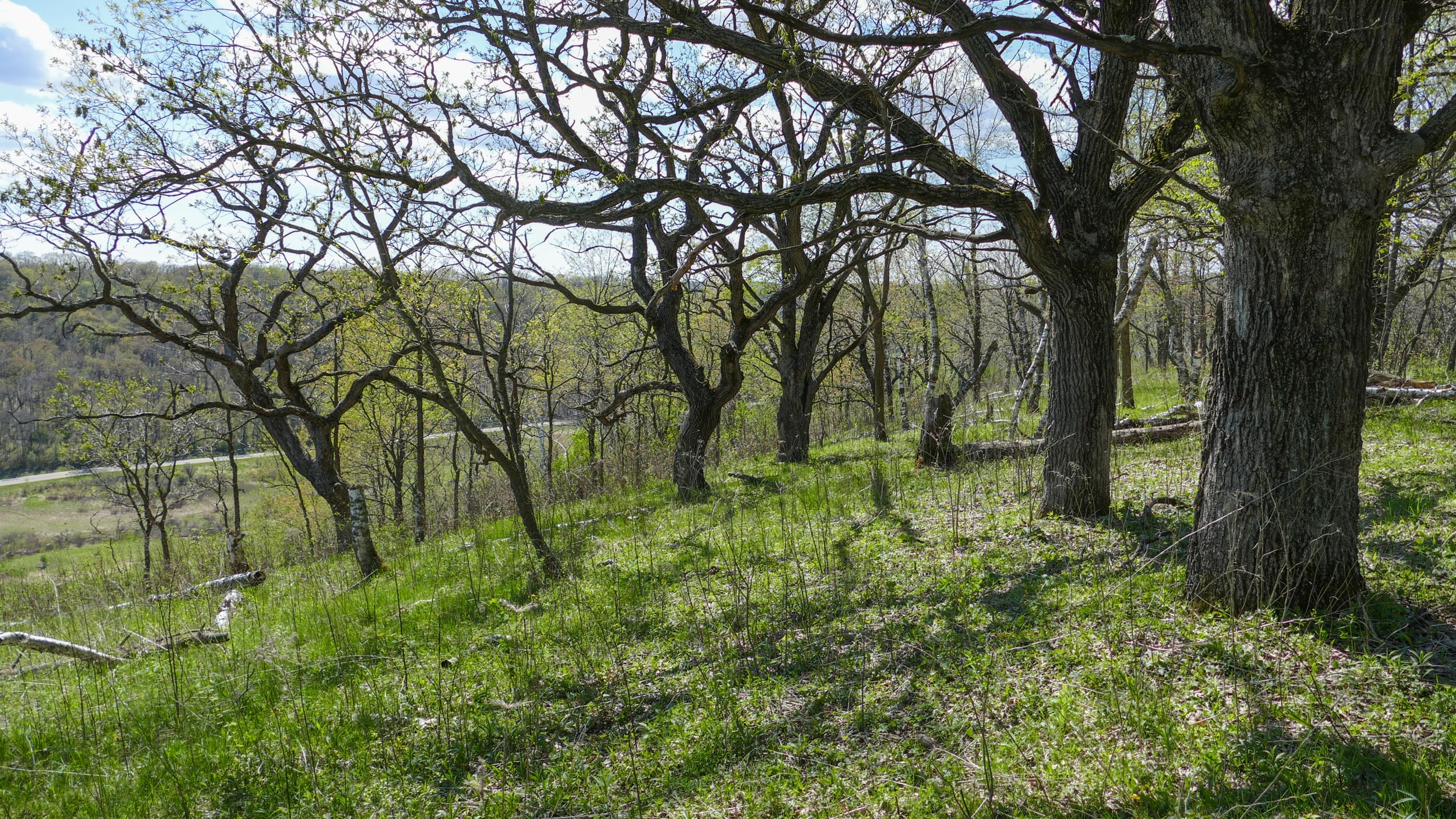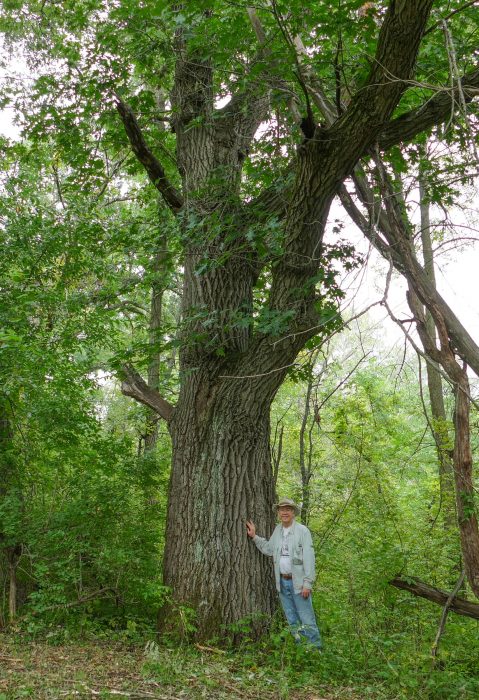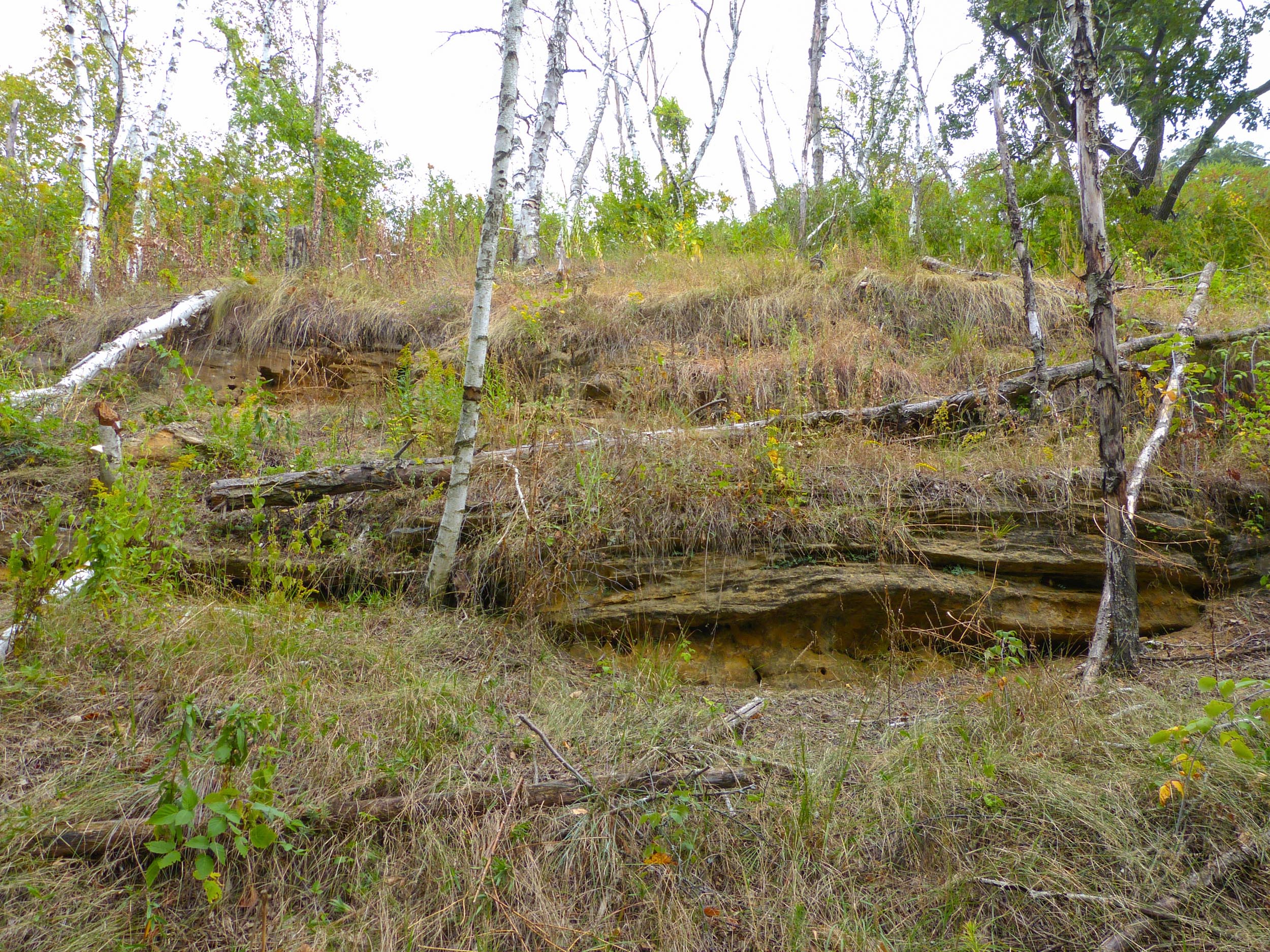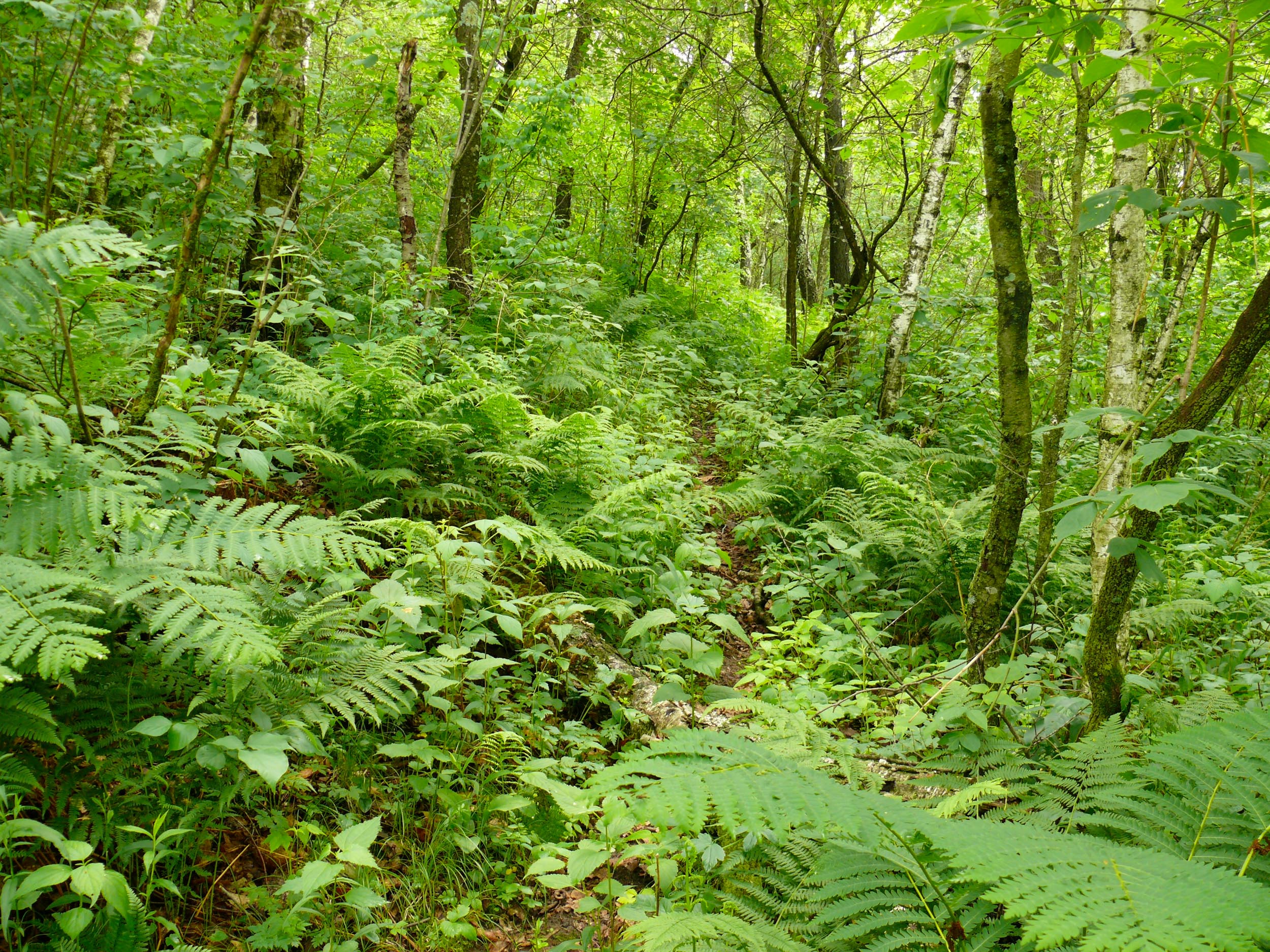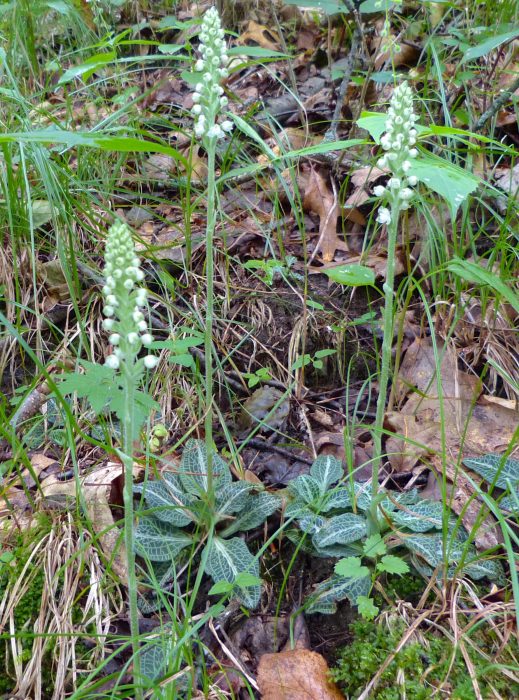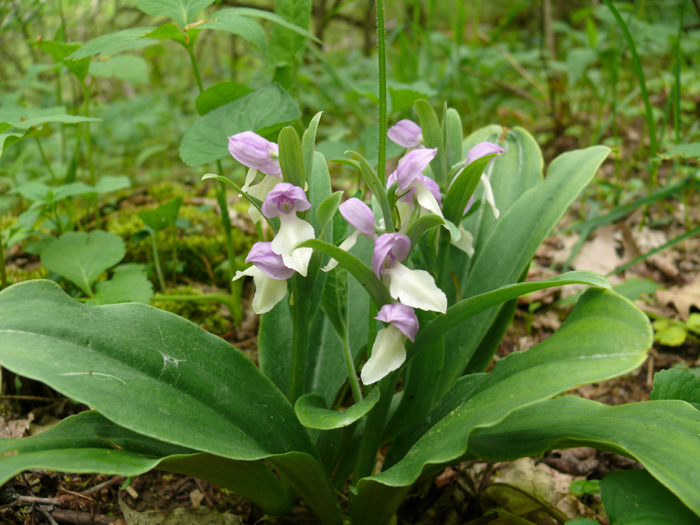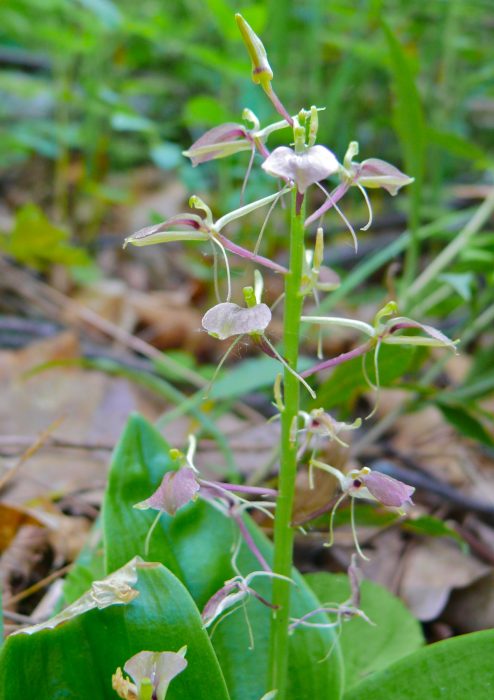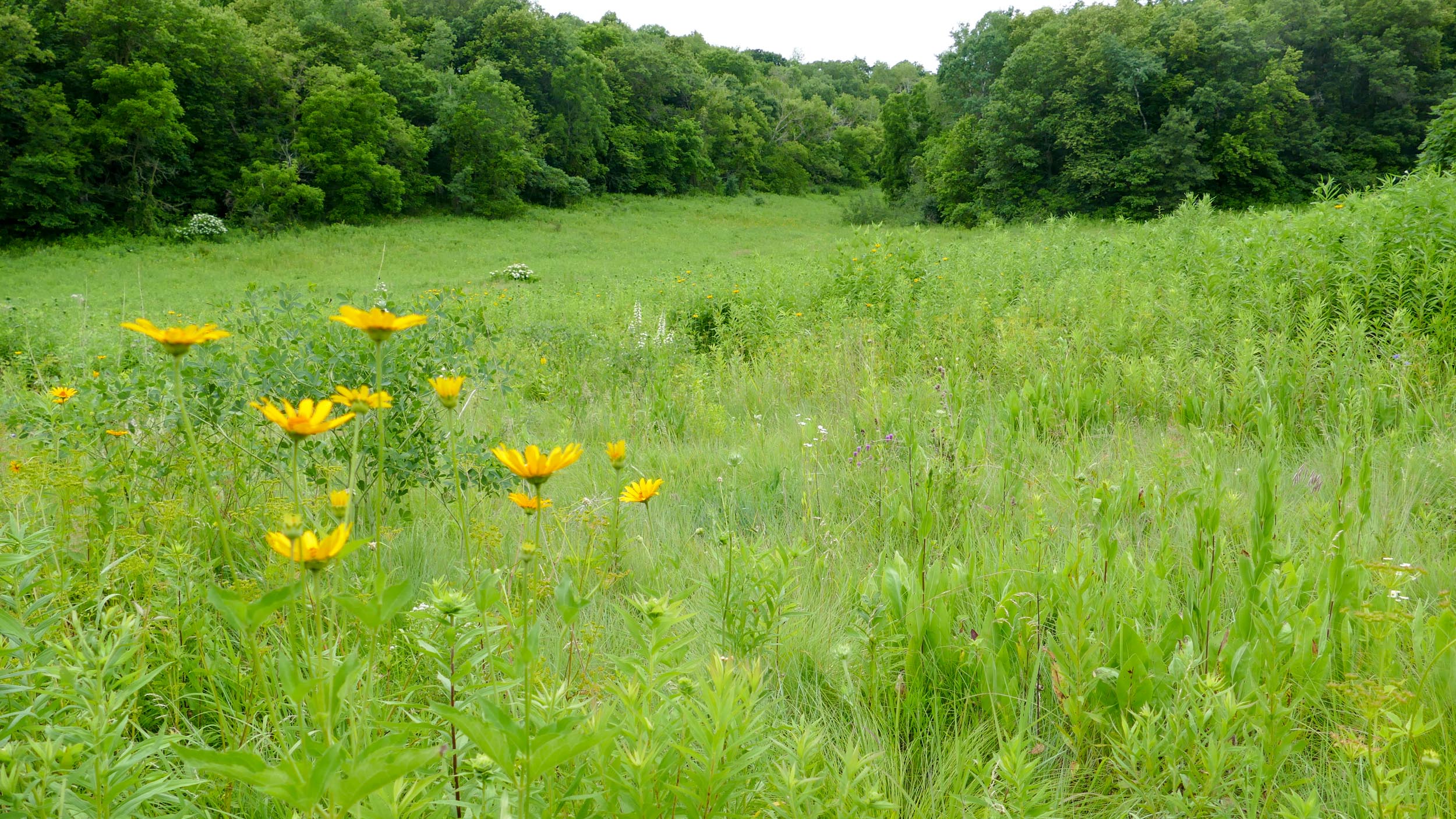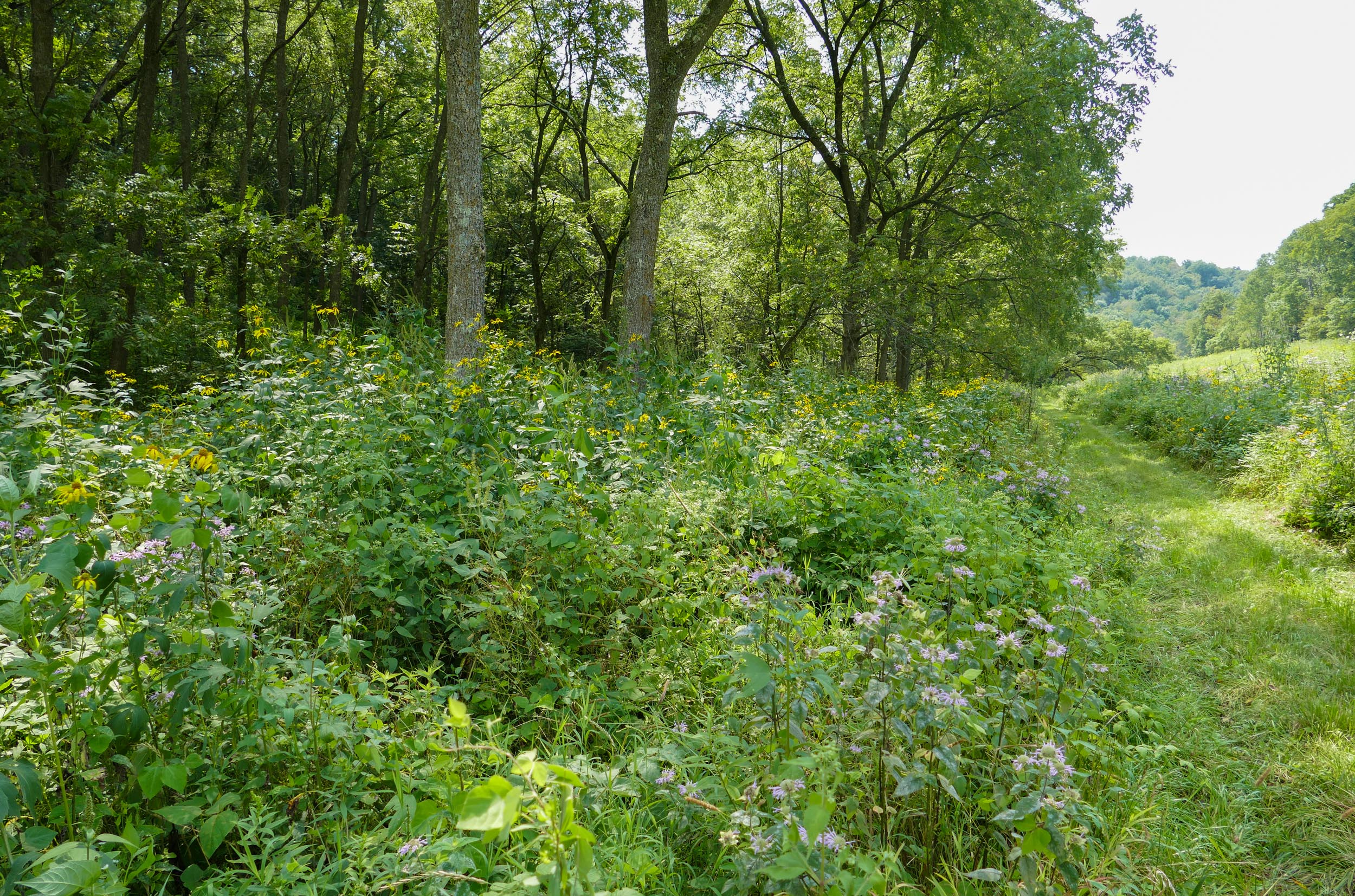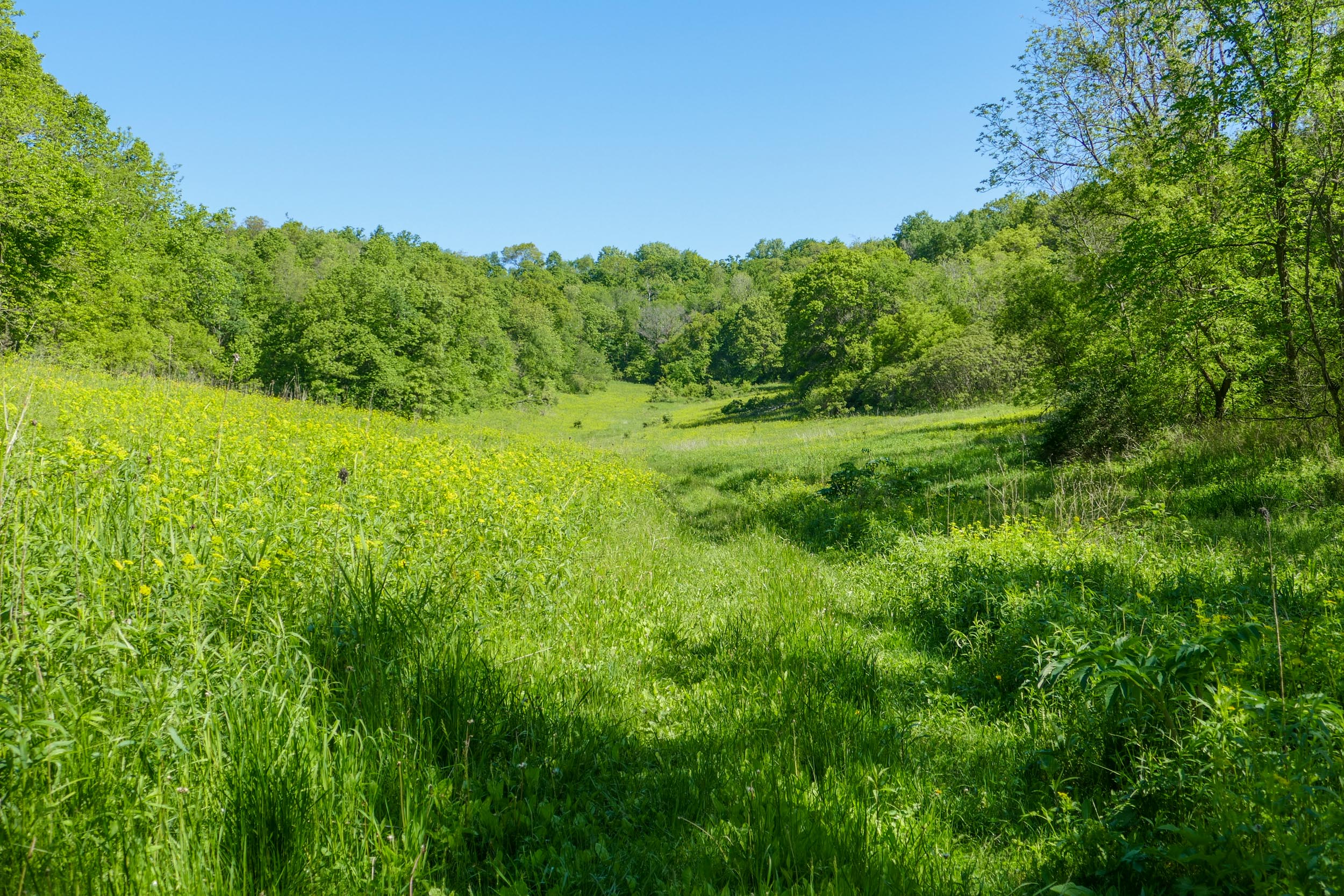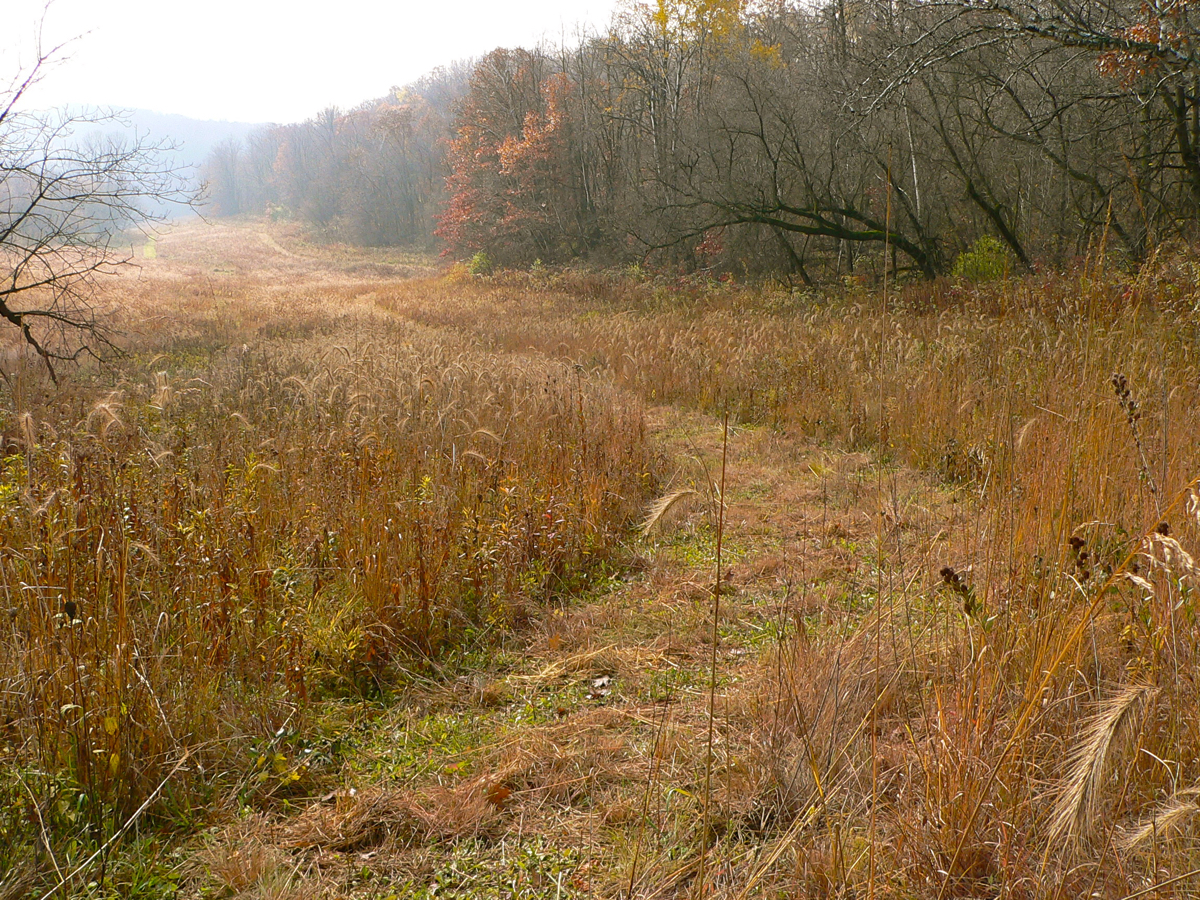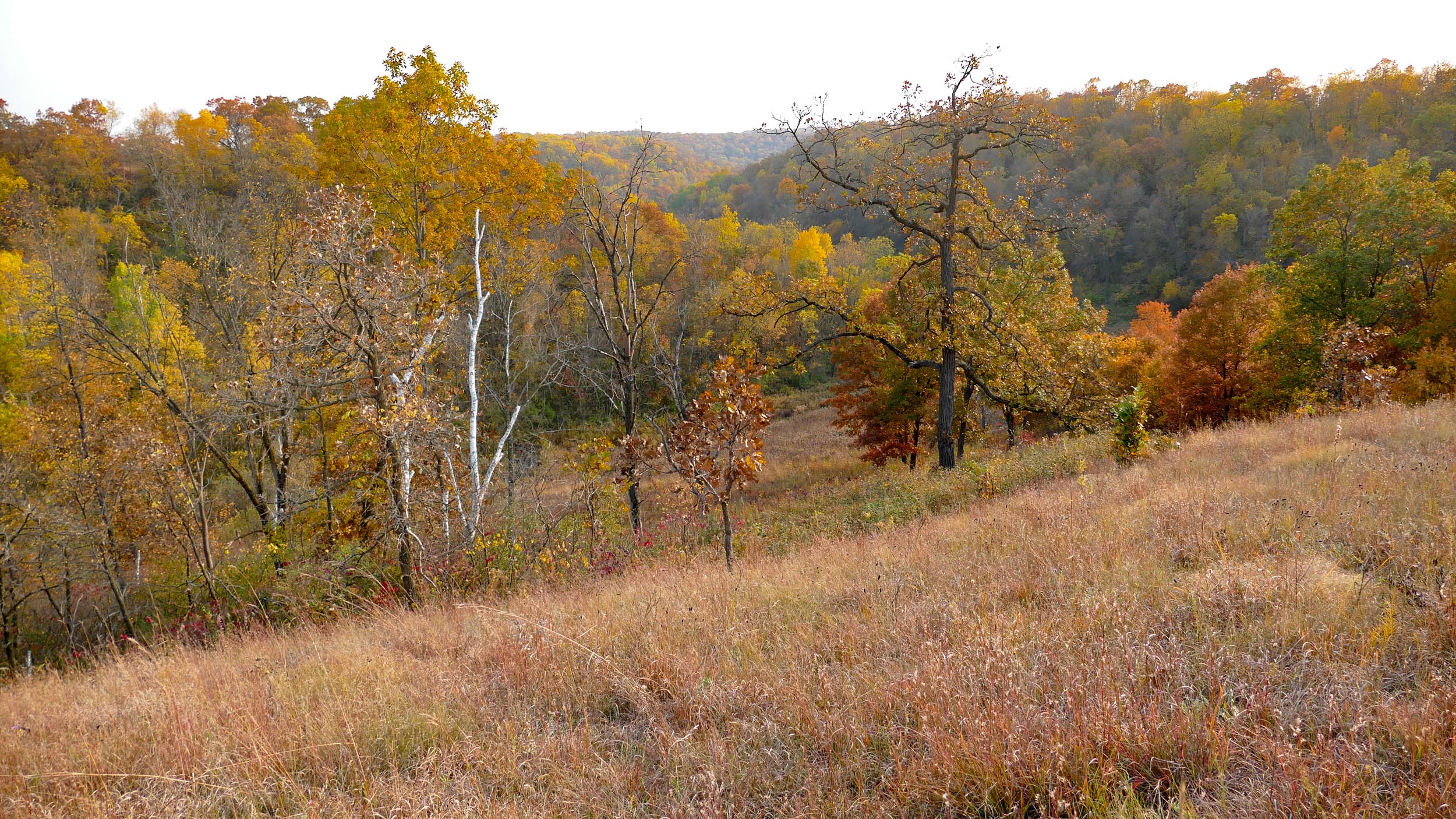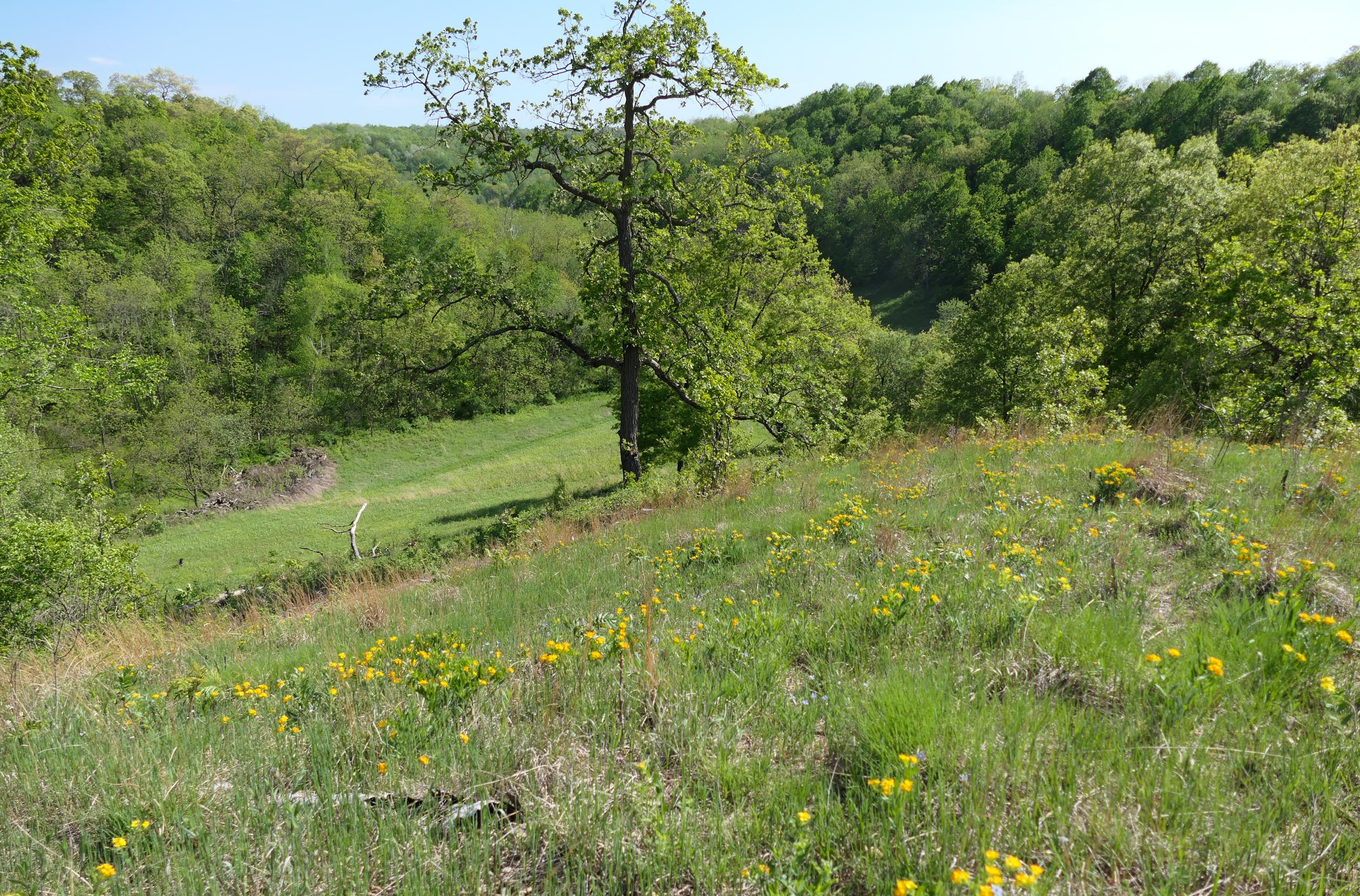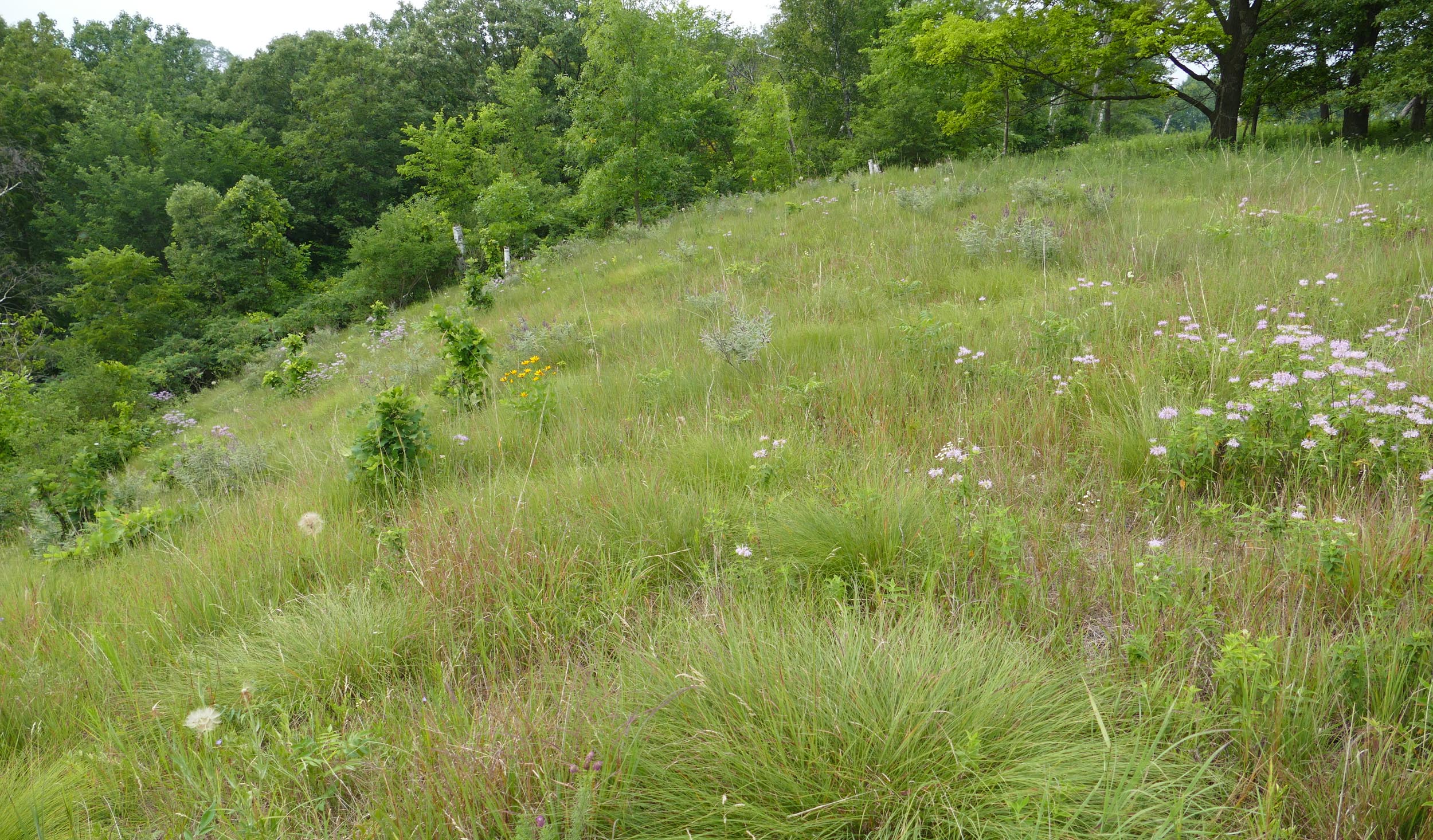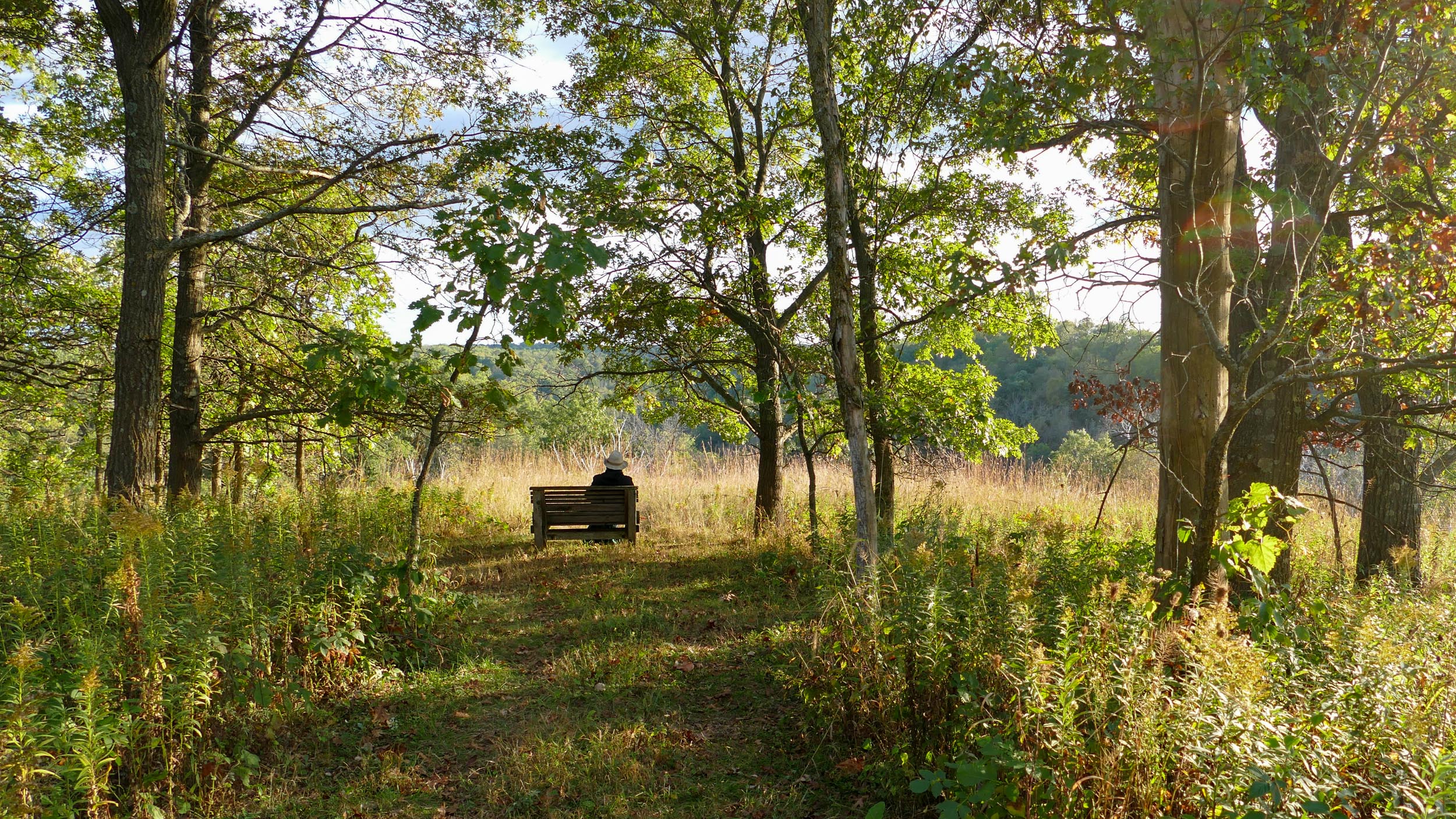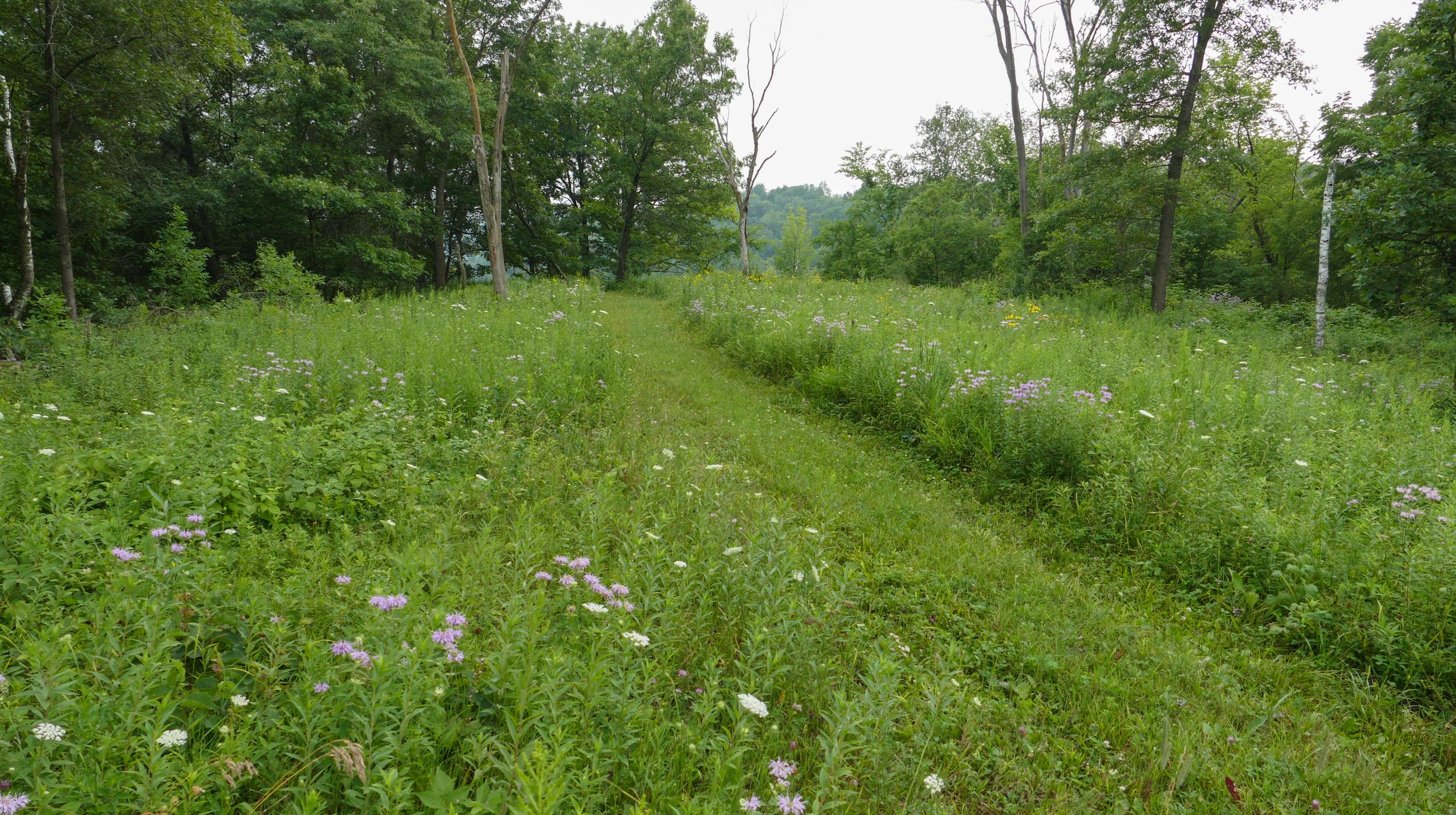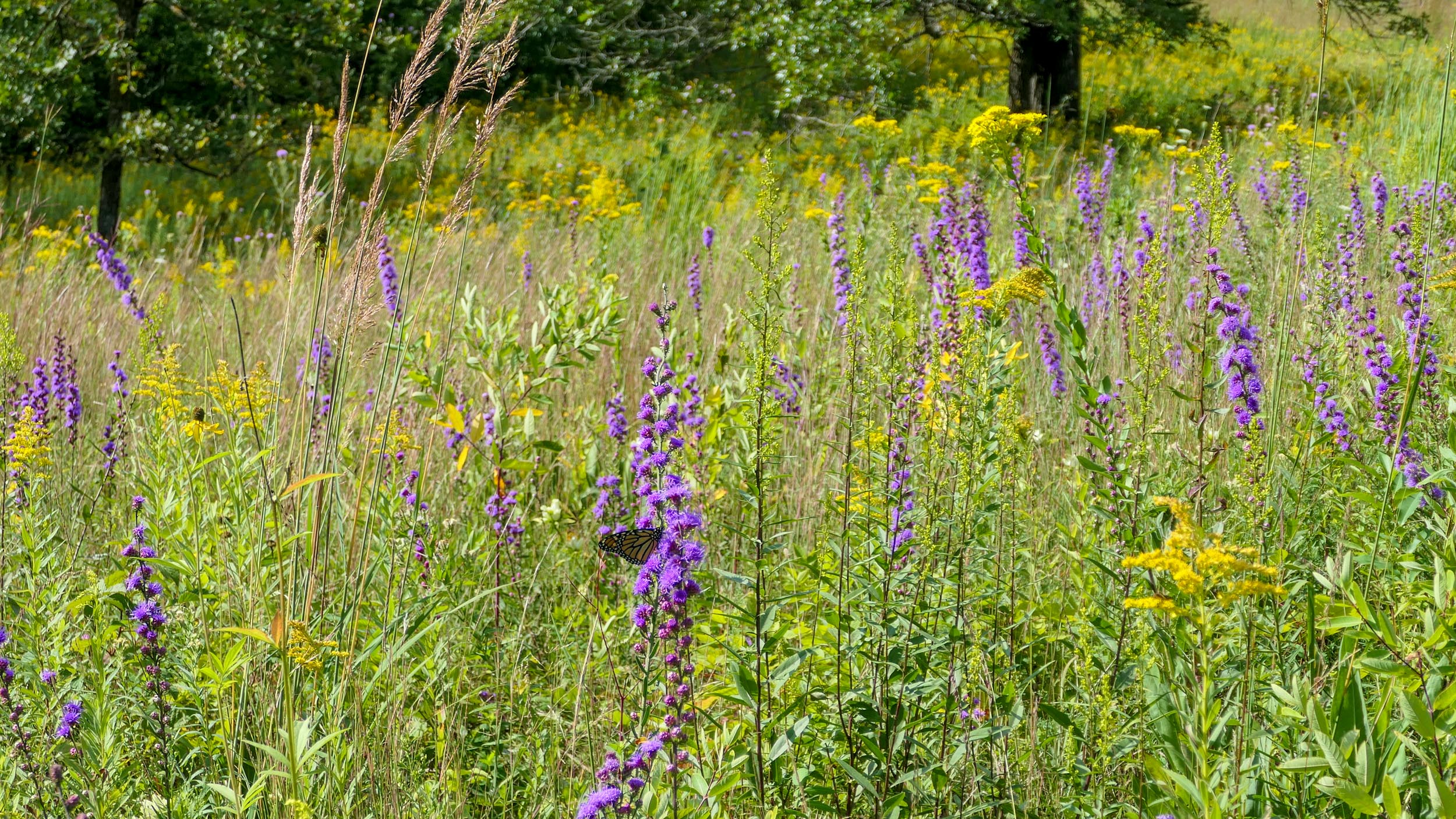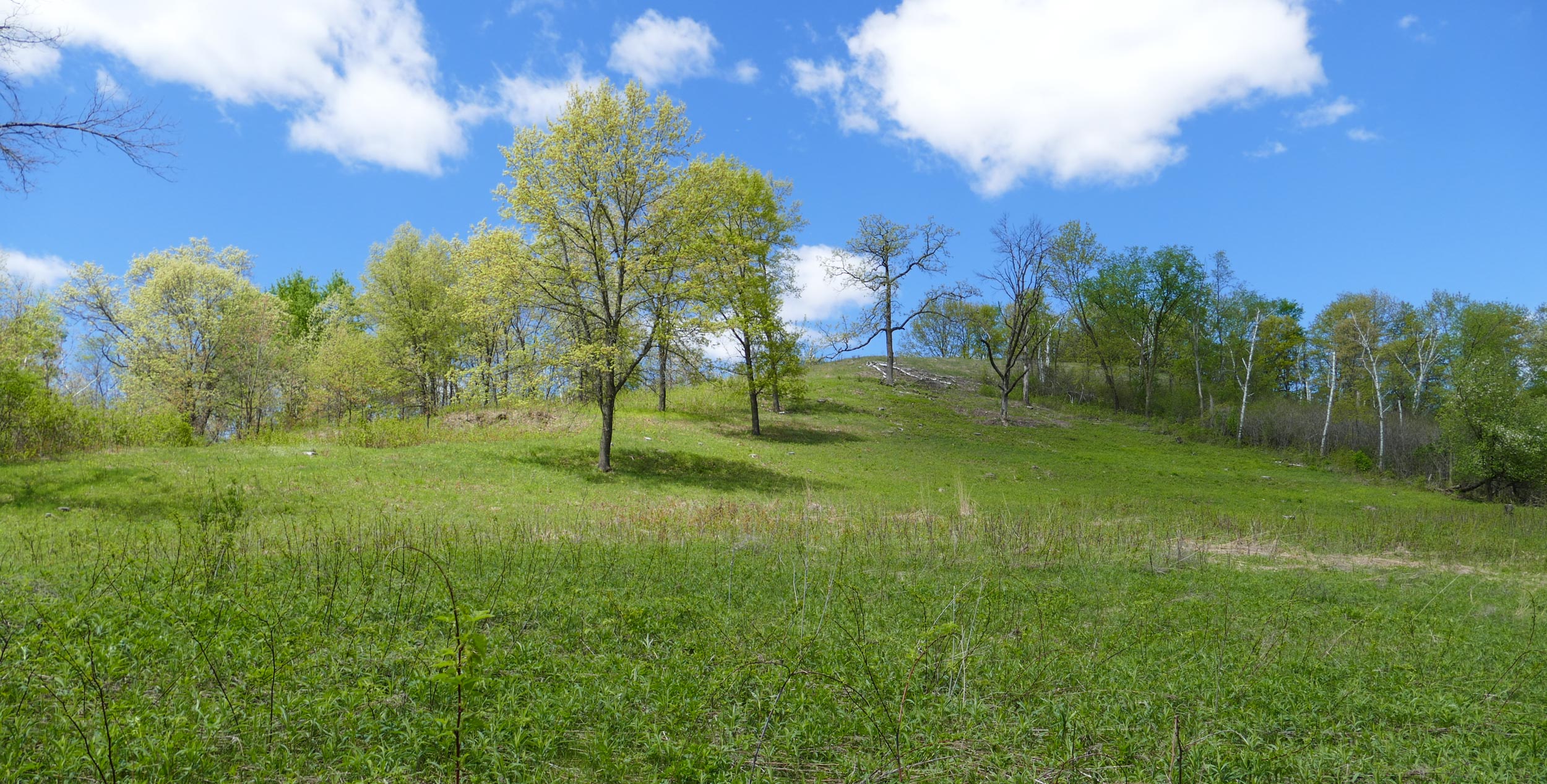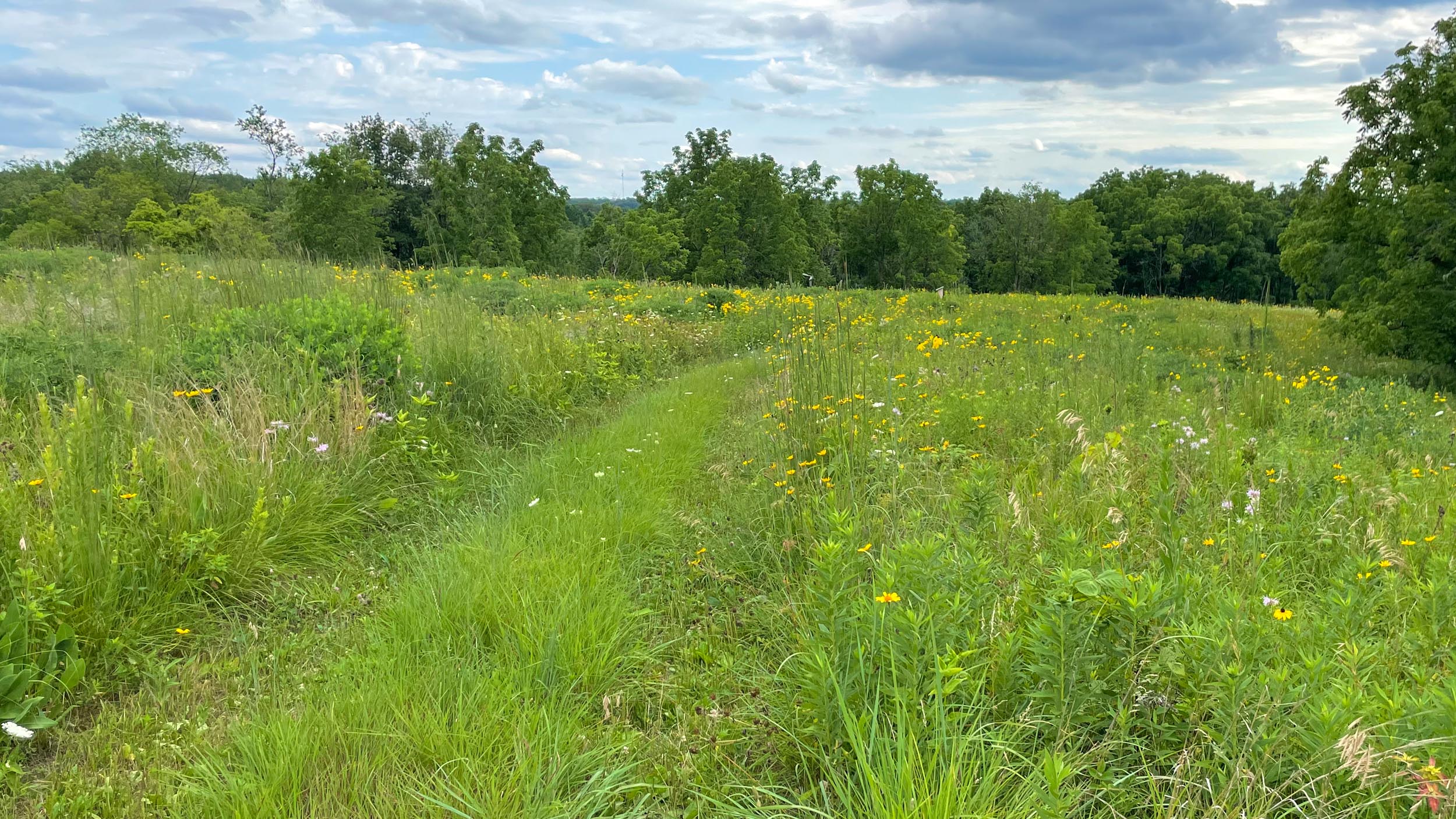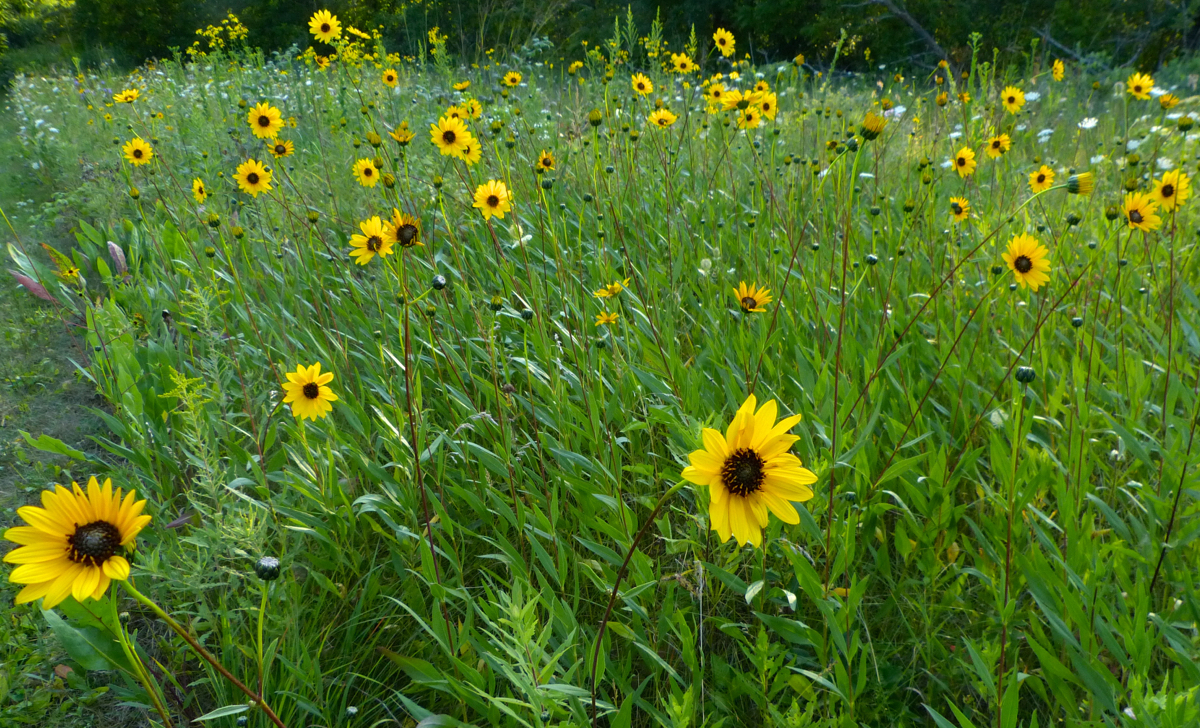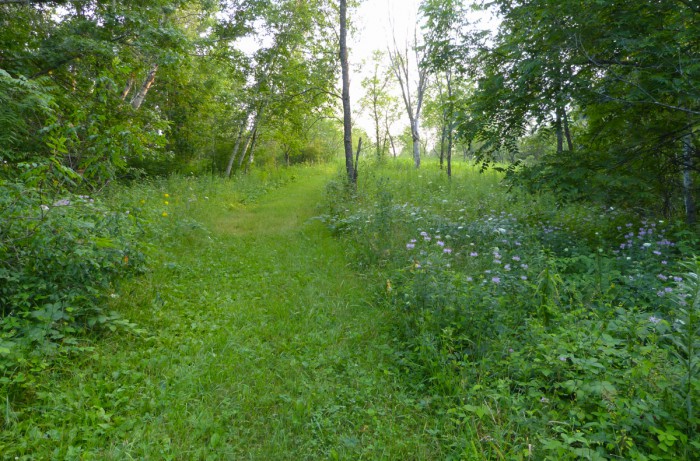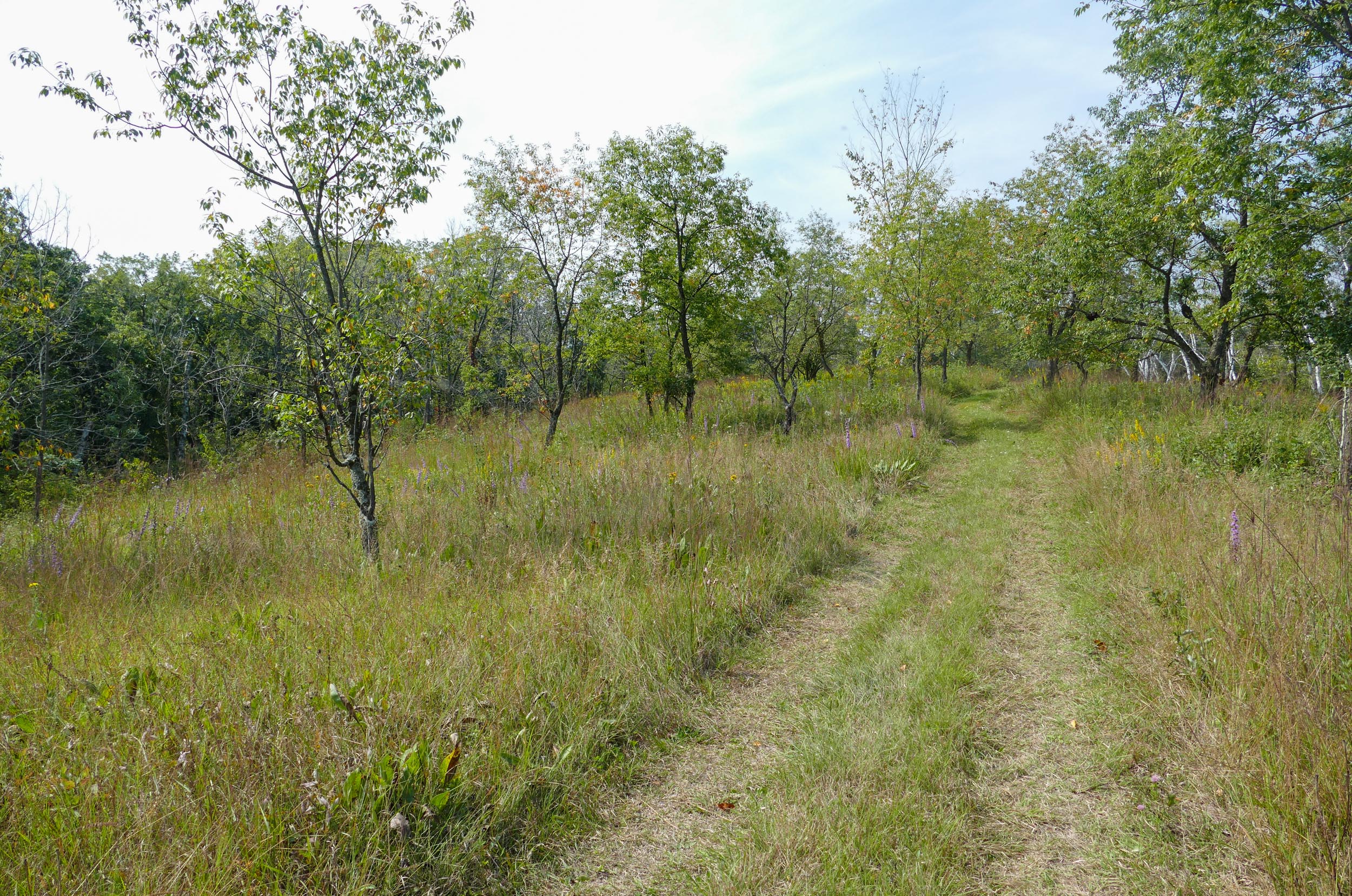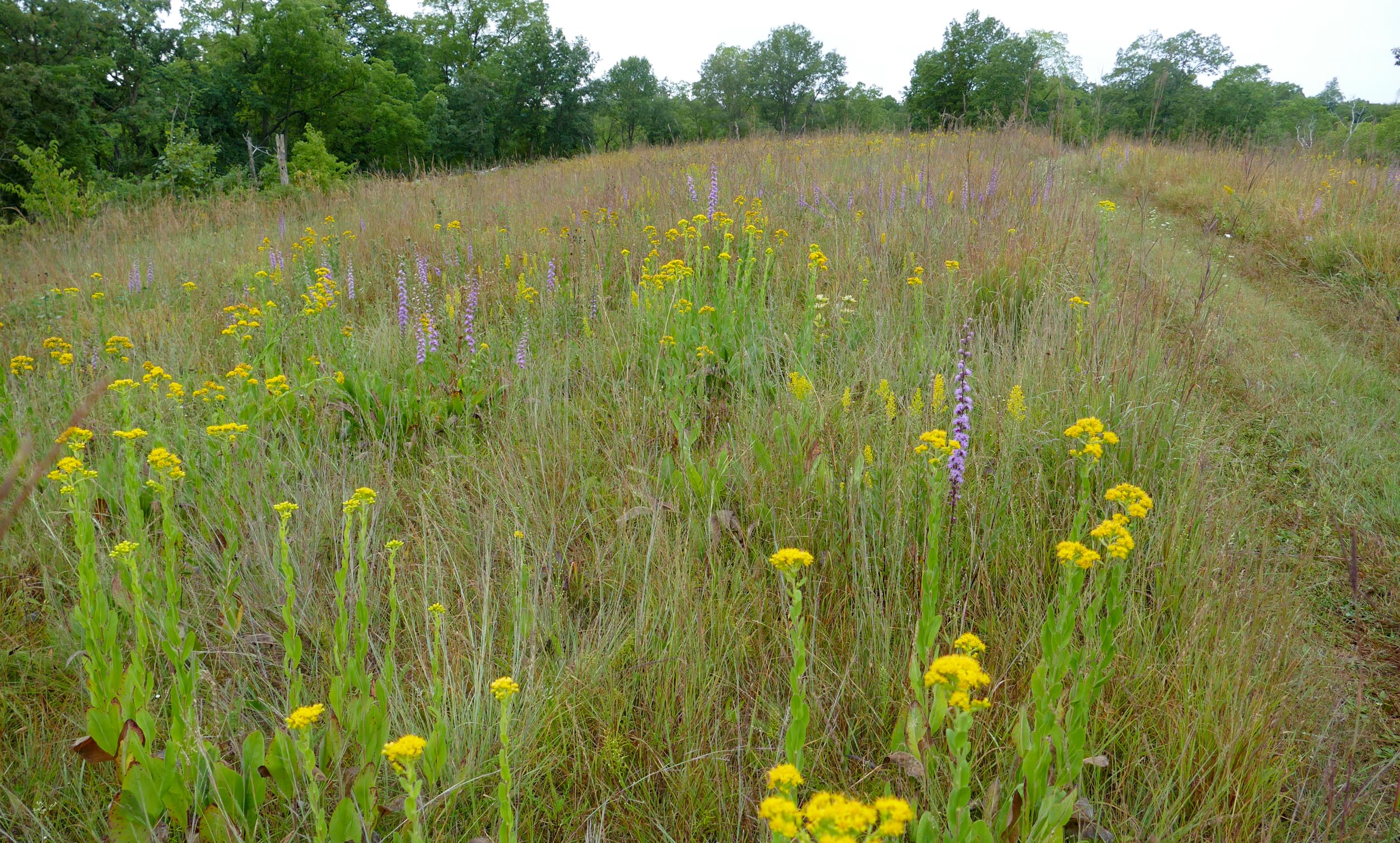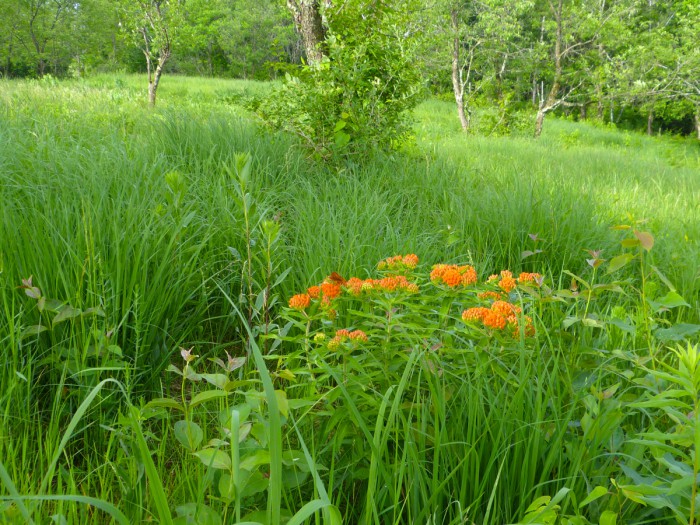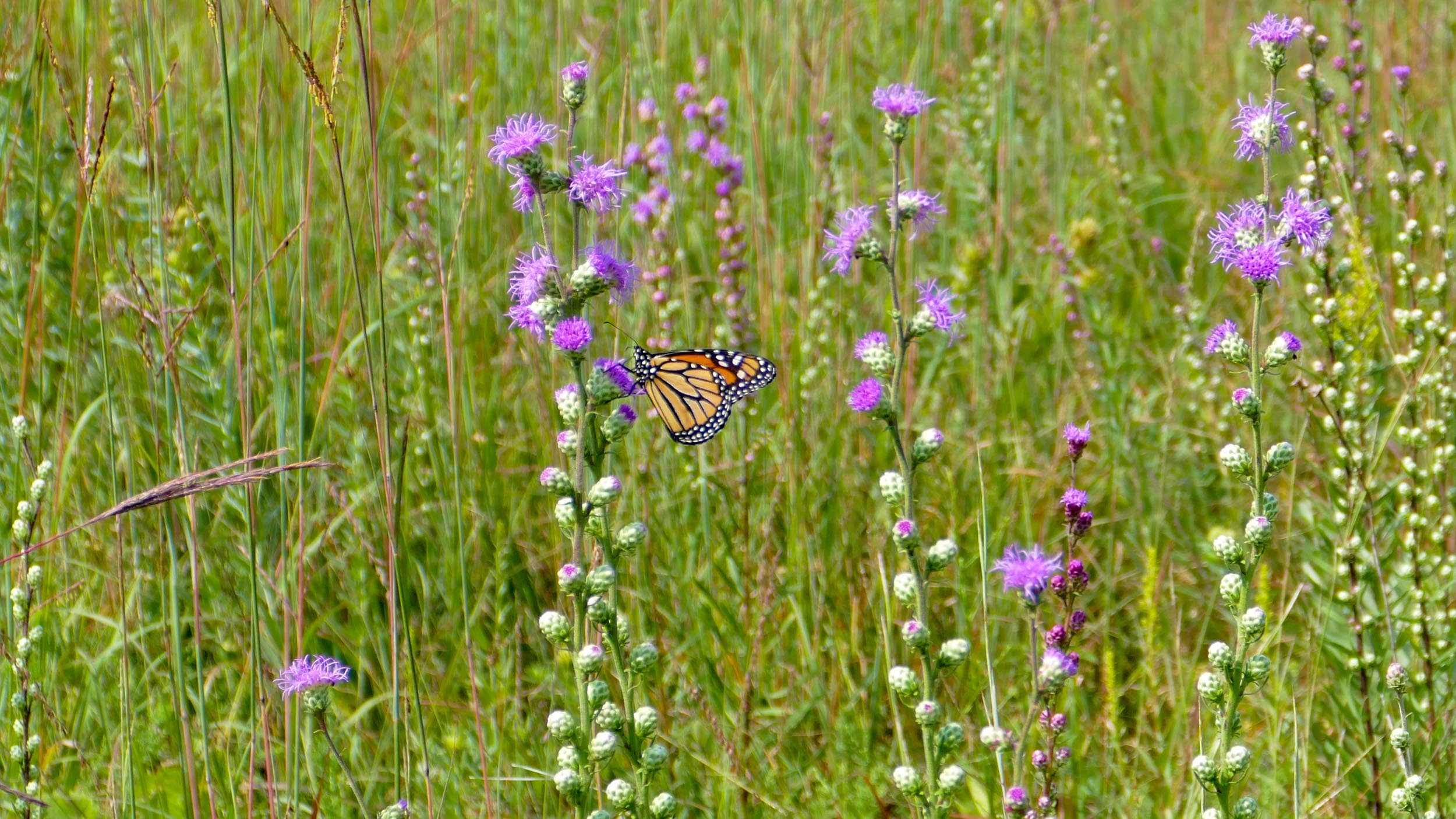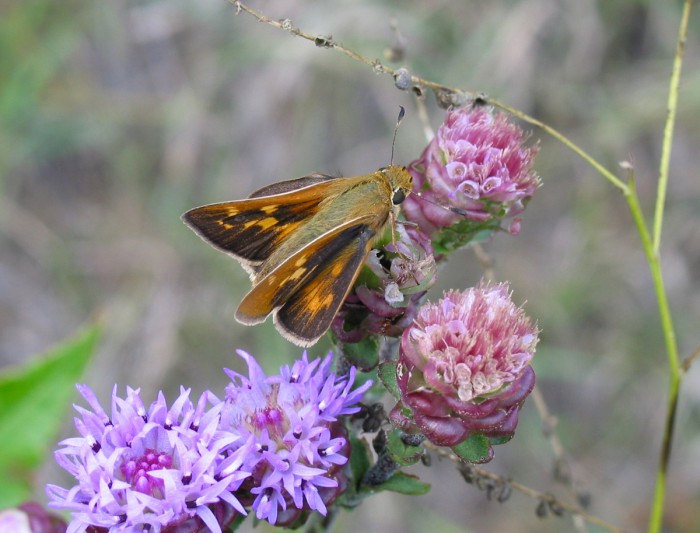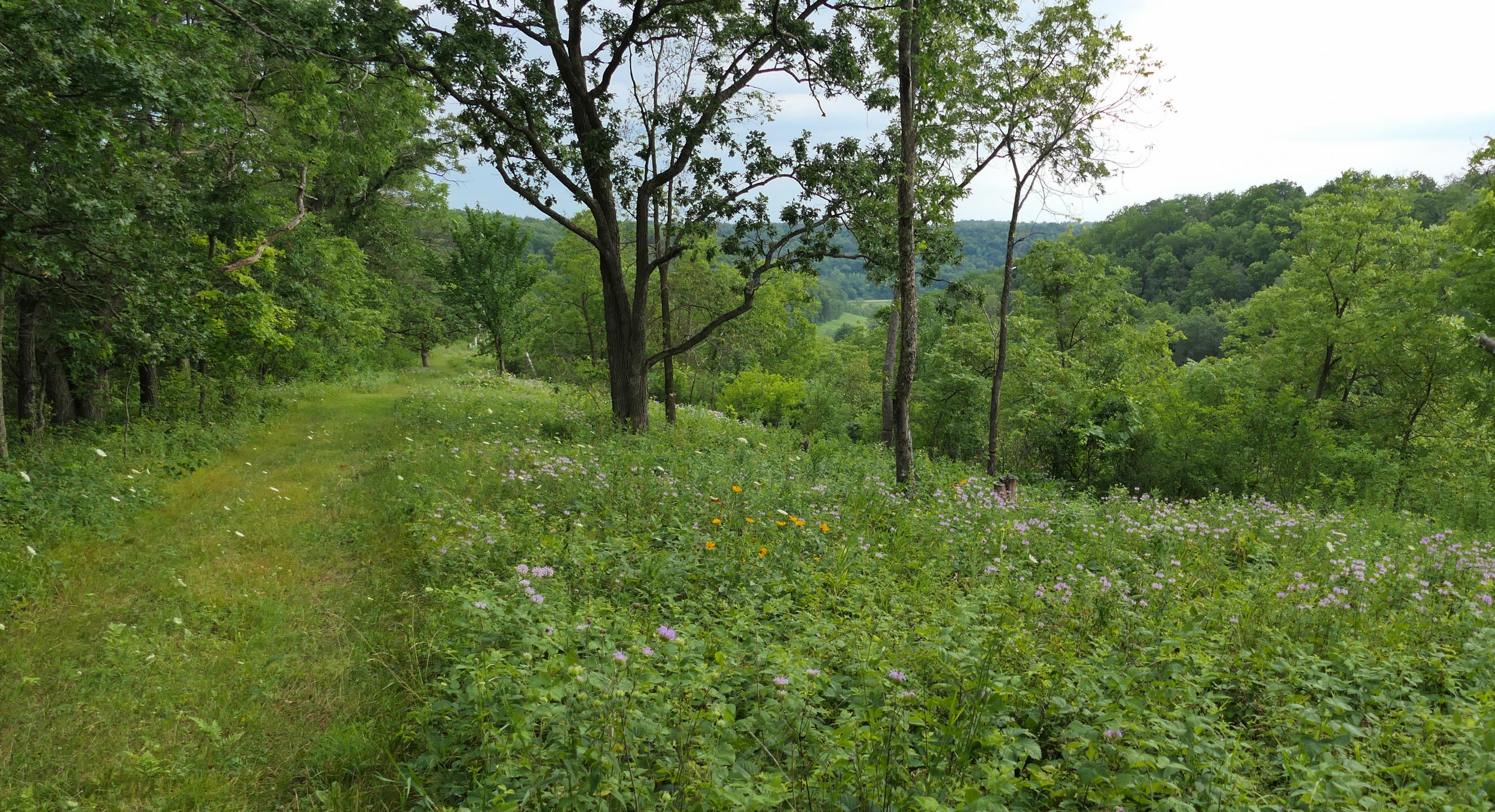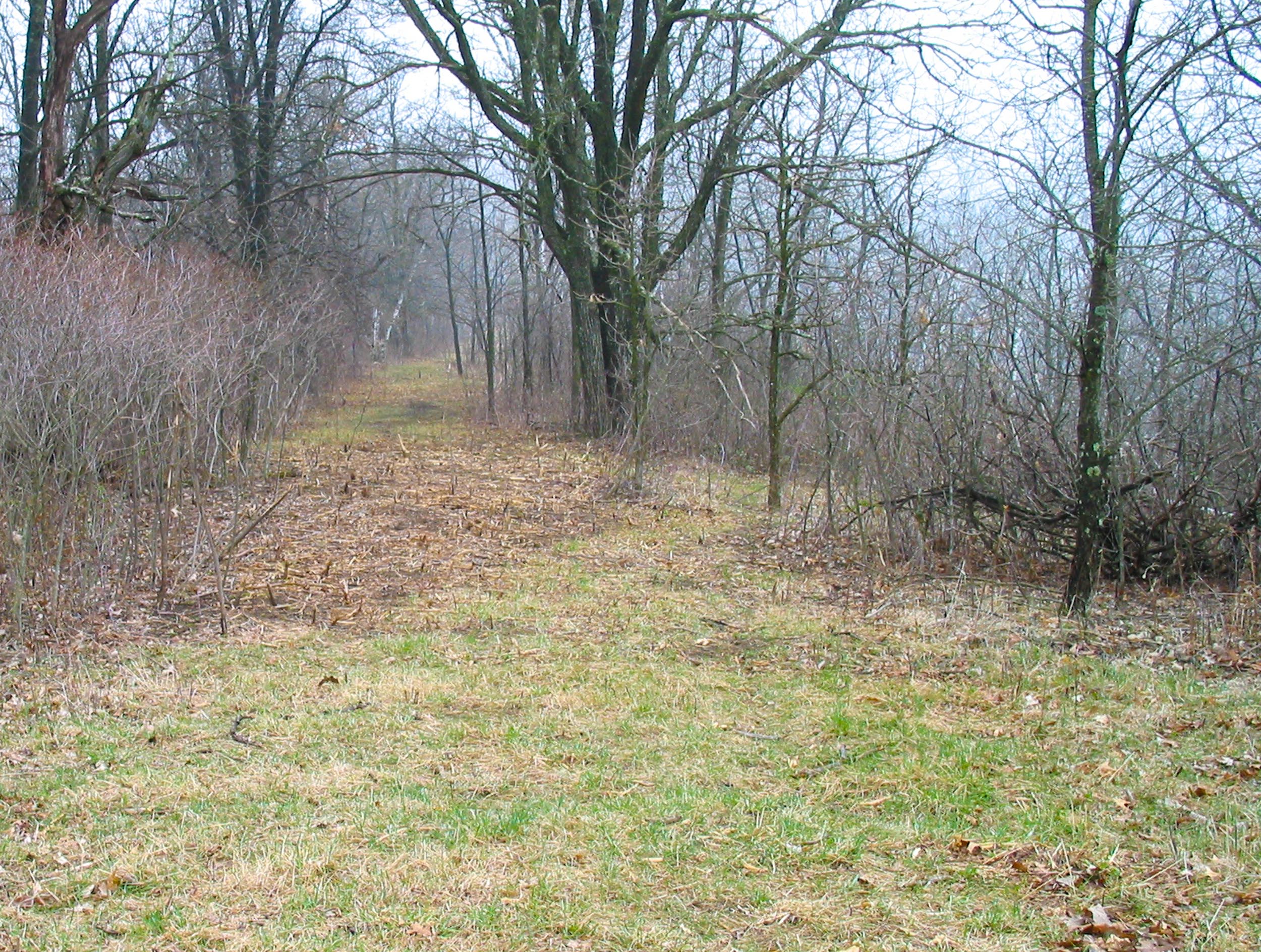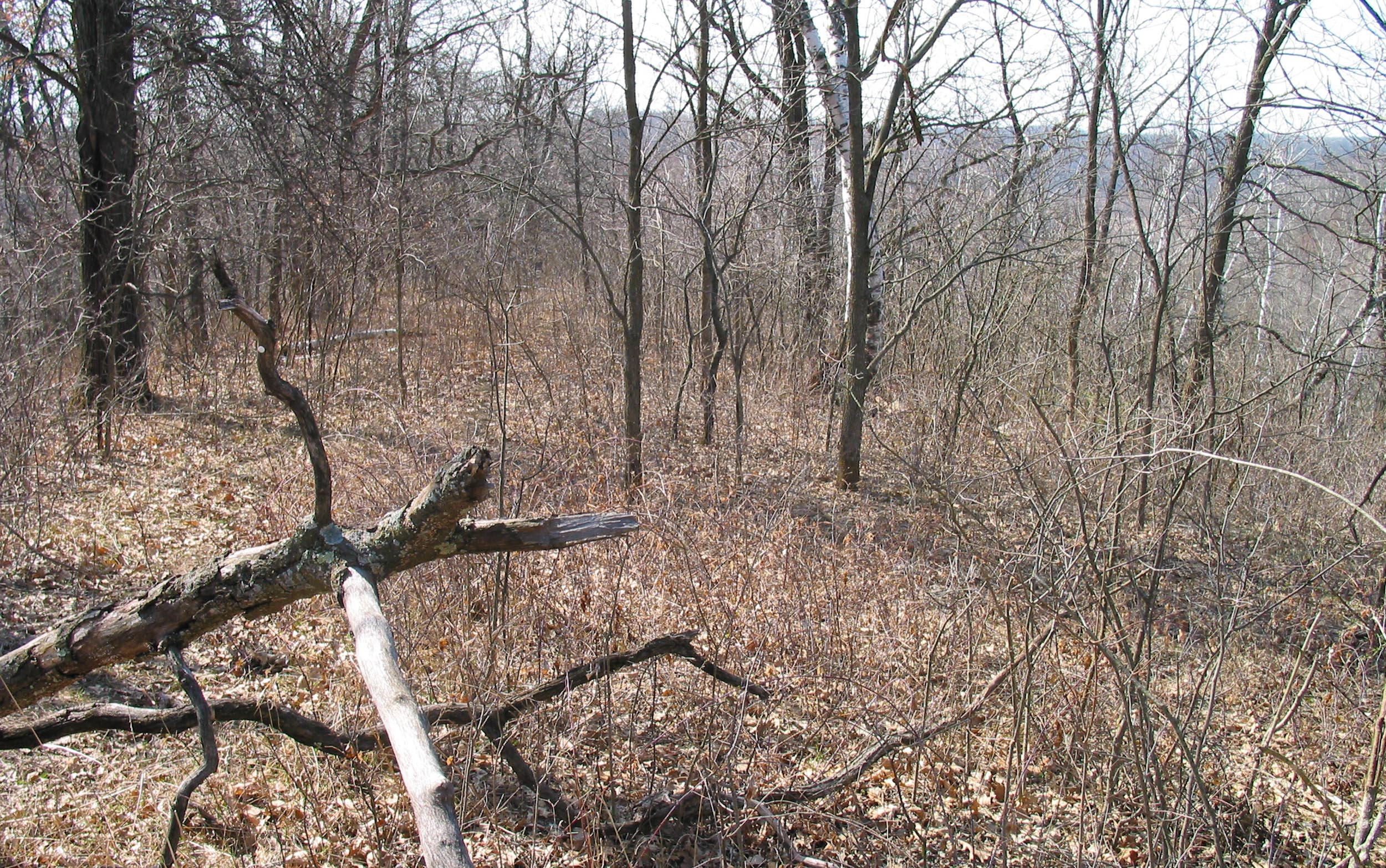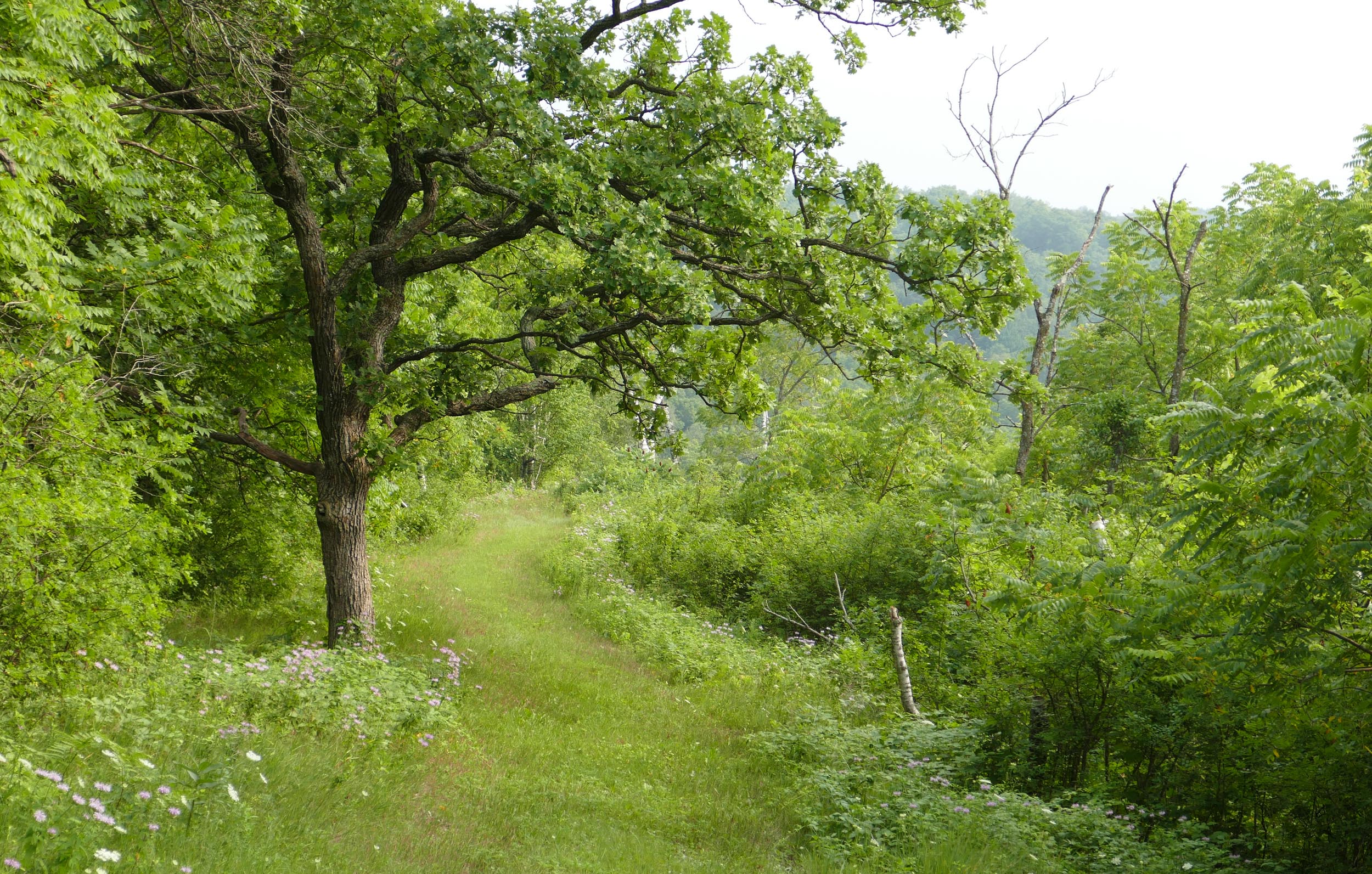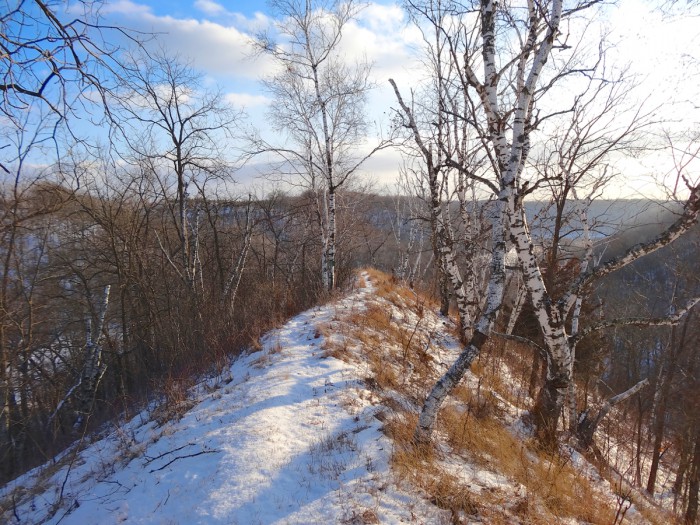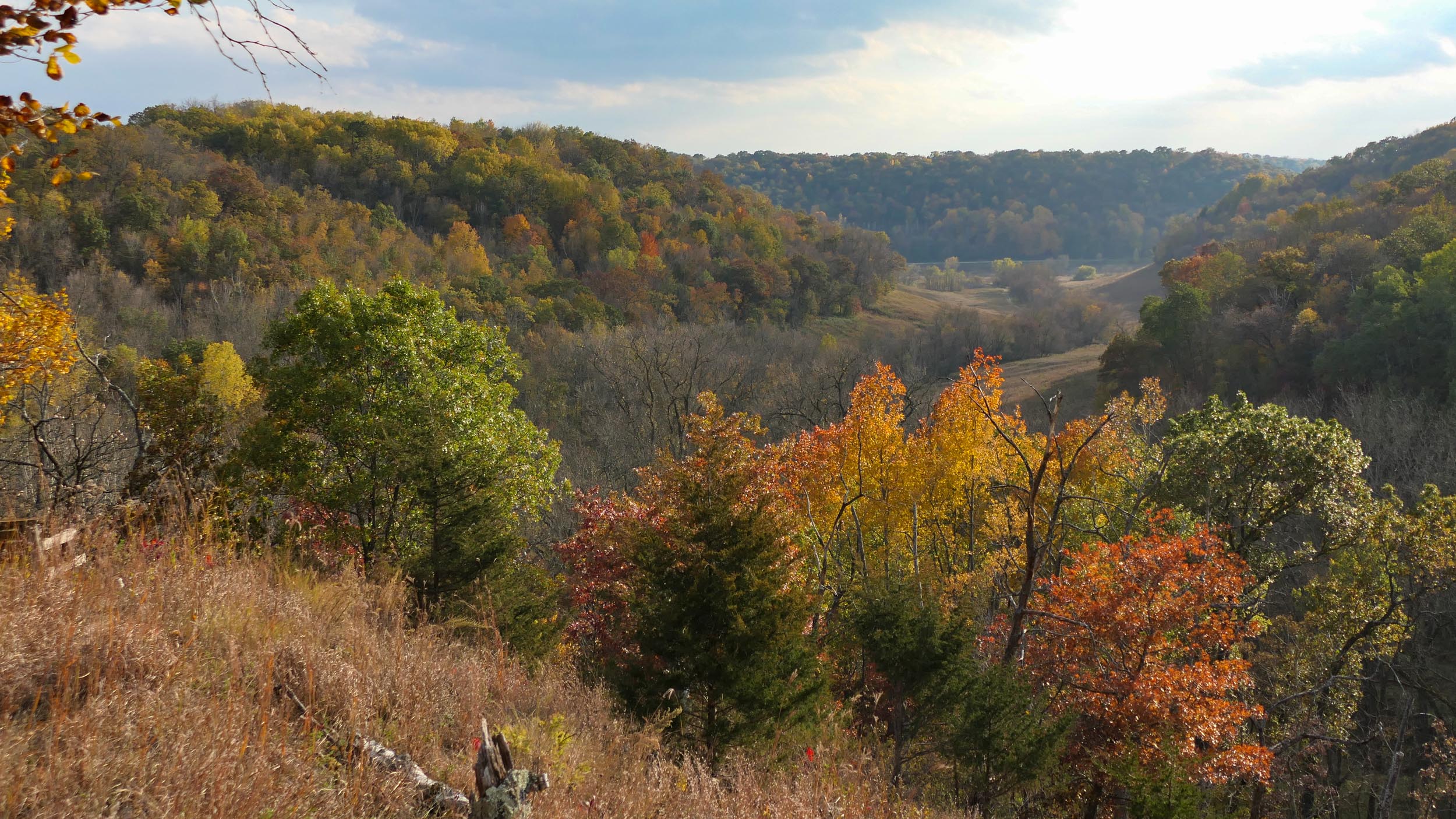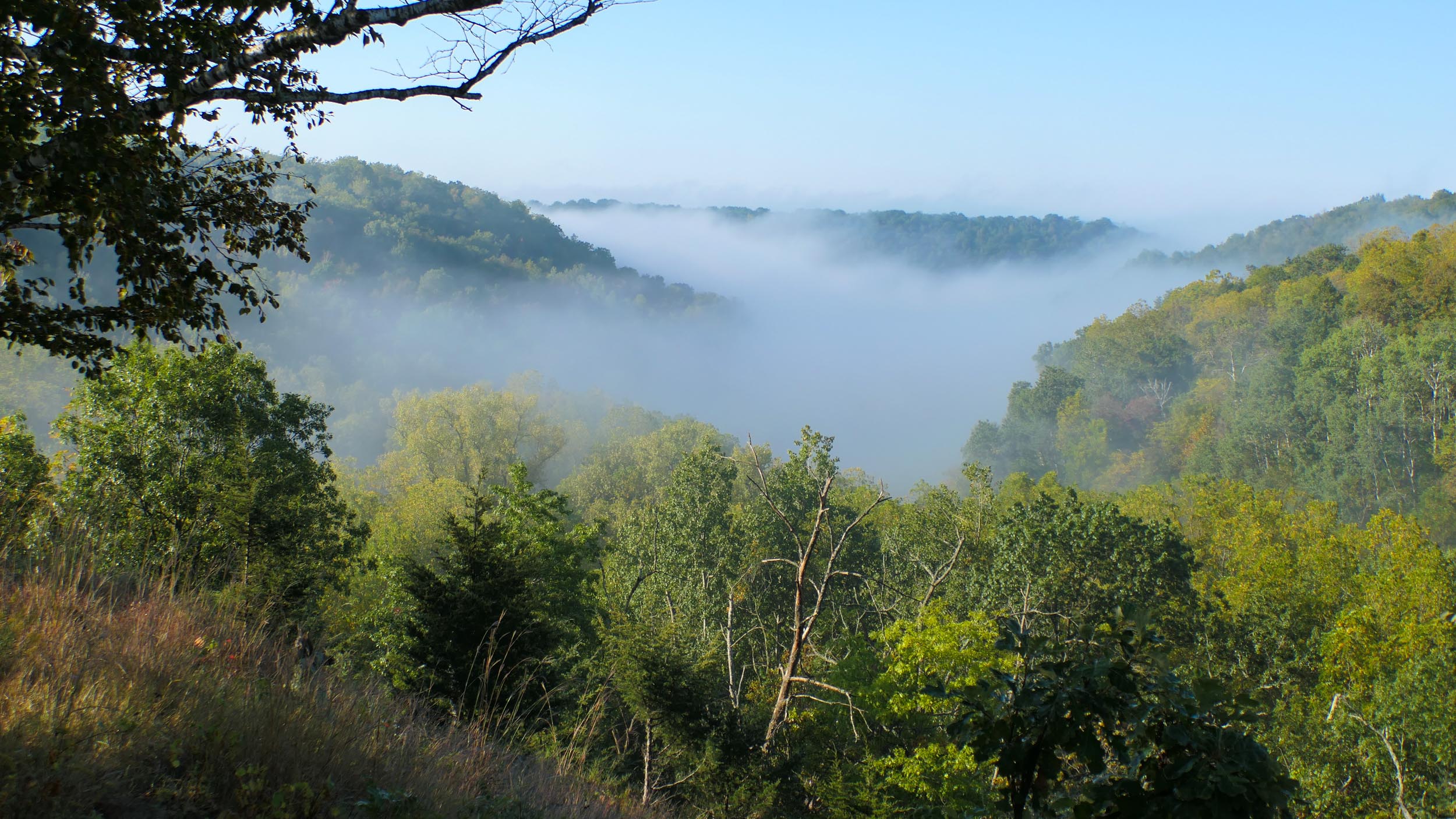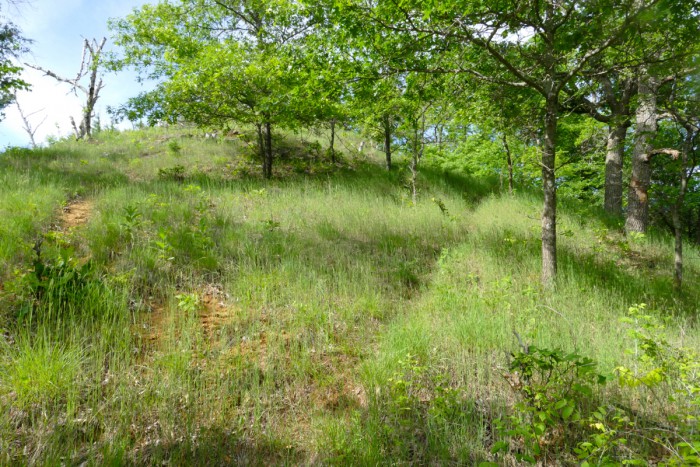This is a ‘walk’ through the eastern half of our land. This one really is a virtual walk – there aren’t any easy paths between some of these places.
Here’s a link to a map of the farm if you enjoy reading maps and want to follow along. The numbers on the photos refer to numbers on the map.
14 – The walk starts at Maple Ridge, a north facing wooded hillside that we bought a few years ago. Most of the rest of our land faces south, so these woods have slightly different trees, and the plants in the ground layer of the woods are slightly different. The floor of the woods is mostly ferns and Wild Geranium.
14 – There are several species here that we haven’t seen on the rest of our land – including this Mountain honeysuckle.
14 – Bent Trillium is much more common than on the rest of our land
14 – This spring I saw Scarlet Tanagers nesting here.
14 – The hill has a large grove of Sugar Maples – another species we don’t have much of on the rest of our property.
14 – Our land goes up and over the top of the ridge, and part way down the other side. That south facing slope has some small, overgrown bluff prairies. We did a little brush clearing on this one, but it’s still very overgrown.
14 – And I found one more new plant for the farm – Cylindrical Blazing Star – one that grows only on dry prairies.
14 – Across the wetland from Maple Ridge is Sumac Prairie – our largest remnant. It has two large prairie areas with savanna between, above and below. We’ve been working to enlarge and restore both the prairies and the savanna. It’s easiest to see the prairies in fall and winter, when there are no leaves on the trees. Below the lower savanna is an old field that we recently planted with prairie.
15 – There’s no good way to go straight across the valley here, so this is a ‘virtual’ part of the walk. First we cross the valley with the creek and the wetland.
15 – This is the creek, in the middle of the wetland.
16 – Looking back from Sumac Prairie, we can see Maple Ridge on the far side of the road.
16 – This is the main part of Sumac Prairie – it’s very steep which makes it difficult to walk.
16 – More of the open part of the prairie
Sumac Prairie has big patches of prairie flowers.
16 – Bird’s Foot Violets in the spring
16 – Whorled Milkweed
16 – This is the caterpillar of a rare moth (Unexpected Cycnia) that I’ve found here a few times, eating the leaves and pods of Whorled Milkweed.
16 – And these are even rarer moths – Northern Flower Moths. This spot is the farthest north this species has been found in Wisconsin.
16 – Rough False Foxglove is an unusual dry prairie plant that doesn’t grow anywhere else on our property.
16 – This is the savanna area along the top of the point, above the prairie. We’ve cleared the brush that surrounded the oaks, and the savanna plants are starting to recover.
16 – This is where we found the largest tree we’ve seen on our property. It’s a Black Oak, and we measured it – 151 inches in circumference.
16 – There’s a ridge of limestone in the woods below the point. Aspens and birch have invaded the prairie that was there originally, so I’ve spent the last few years getting rid of those small trees and cutting brush. It’s starting to get more sun now, and the prairie plants are coming back.
17 – Continuing on the walk to the north, we go down the hill through some thick woods.
There are several small native orchids that grow on these wooded hillsides.
17 – Rattlesnake Plantain
17 – Showy Orchis
17 – Lily-leaved Twayblade
18 – At the bottom of the hill is 3 Finger Valley, a long narrow valley that begins just north of our house, and has one of our early planted prairies.
18 – Green-headed Coneflower, Monarda, and American Bellflower grow under Black Walnut trees along the edge of 3 Finger Valley.
19 – 3 Finger Valley where it splits into 3 valleys
19 – Looking back down 3 Finger Valley from the middle valley
20 – Hidden Oaks Prairie is another south-facing dry prairie point with a wonderful view down 3 Finger Valley and across our land.
20 – Hidden Oaks Point in the spring with Hoary Puccoon
20 – We’re still working to open up the prairie and clear brush from the steep sides of the point.
20 – North of the prairie point are areas of overgrown savanna which we’ve been working to clear. This is looking from the edge of the restored savanna, back out onto the prairie point.
20 – Farther back on the point is an area that used to be a thick grove of aspen and birch. We cut and removed many of the trees, and the prairie plants are starting to return. We mow once a year to keep the brush from growing back.
20 – Just north of the savanna is a small remnant that we call Hidden Oaks Meadow. Beyond the meadow, past the big oak tree, is one of the planted prairies.
20 – Hidden Oaks Meadow has a large population of Rough Blazing Star. It’s a favorite nectar plant for Monarchs during their fall migration.
20 – The sides of Hidden Oaks Point are areas of overgrown prairie and savanna. We’ve done a lot of clearing work on it ourselves, and then in 2017 we hired some folks to clear the main south-facing slope. We still mow the lower parts, and I clear some of the returning brush, but the prairie is slowly coming back. There are still more sides to clear – we hope to get to them someday.
21 – Northeast of Hidden Oaks is the Cat’s Paw Prairie – another of the planted prairies.
21 – Cat’s Paw Prairie in early summer with Golden Alexanders, Wild Lupine, and Prairie Phlox
21 – The Cat’s Paw Prairie has more sunflowers than our other planted prairies.
22 – This is walking from through the woods from the Cat’s Paw Prairie toward the Knife Edge Prairie – one of our favorite prairie remnants.
22 – We started mowing this area once a year – every spring – right after we discovered it in 2001. At first we mowed around and under the many small trees that were scattered through the prairie remnant. After about 3 years the prairie flowers really started coming back.
22 – In 2018 we cut and removed the little trees, and it started to look more like a prairie. This is from late summer of 2020.
22 – The Knife Edge Prairie is our only remnant that has many Butterfly Milkweed plants. There were only a few when we first started mowing, but now we see more every year.
22 – The Rough Blazing Star is a favorite nectar plant for migrating Monarchs.
22 – Leonard’s Skipper – a small unusual butterfly that we used to see in the Knife Edge Prairie. We haven’t seen any in recent years.
22 – October Ladies Tresses – a small native orchid I’ve found here – at the far northern edge of its range.
23 – This is the beginning of the ridge that gives the Knife Edge it’s name. The slider shows what it looked like before and after we mowed a path along the top, and more recently, now that the path is well established.
23 – A large Burr Oak about half way along on the path. The land drops off steeply on the right – to the west. I’ve been trying to clear the hillside of brush and invading walnut trees, but it’s slow work because it’s so steep.
23 – As it gets closer to the point, the path gets so narrow that we can’t mow it, but it continues to follow the top of the ridge.
23 – The view from the Knife Edge Point – looking back down Center Valley toward the house and the wetland.
23 – And another view on a day when I got up the the top early, when there was still mist in the valley.
23 – This shows some of the hillside below – looking back up to the point.
We’ve gotten to the end of the tour. Here are links back to the 3 parts of the tour. Western Walk Eastern Walk Main Farm Tour

